Genetics & Family Health













PUBLISHED
Traveling Blender, LLC. 10036 Saxet Boerne, TX 78006
PUBLISHER: Louis Doucette louis@travelingblender.com
BUSINESS MANAGER: Vicki Schroder vicki@travelingblender.com
GRAPHIC DESIGNER: Jennifer Nelson jennifer@travelingblender.com
ADVERTISING
Sandy Weatherford sandy@travelingblender.com SAN ANTONIO: Gerry Lair gerrylair@yahoo.com For more
San Antonio Medicine is the official publication of Bexar County Medical Society (BCMS). All expressions of opinions and statements of supposed facts are published on the authority of the writer, and cannot be regarded as expressing the views of BCMS. Advertisements do not imply sponsorship of or endorsement by BCMS
EDITORIAL CORRESPONDENCE: Bexar County Medical Society 4334 N Loop 1604 W, Ste. 200 San Antonio, TX 78249
Email: editor@bcms.org
MAGAZINE ADDRESS CHANGES: Call (210) 301-4391 or Email: membership@bcms.org
SUBSCRIPTION RATES: $30 per year or $4 per individual issue
ADVERTISING CORRESPONDENCE: Louis Doucette, President Traveling Blender, LLC.
A Publication Management Firm 10036 Saxet, Boerne, TX 78006
www.travelingblender.com
For advertising rates and information Call (210) 410-0014
Email: louis@travelingblender.com
SAN ANTONIO MEDICINE is published by SmithPrint, Inc. (Publisher) on behalf of the Bexar County Medical Society (BCMS). Reproduction in any manner in whole or part is prohibited without the express written consent of Bexar County Medical Society. Material contained herein does not necessarily reflect the opinion of BCMS, its members, or its staff. SAN ANTONIO MEDICINE the Publisher and BCMS reserves the right to edit all material for clarity and space and assumes no responsibility for accuracy, errors or omissions. San Antonio Medicine does not knowingly accept false or misleading advertisements or editorial nor does the Publisher or BCMS assume responsibility should such advertising or editorial appear. Articles and photos are welcome and may be submitted to our office to be used subject to the discretion and review of the Publisher and BCMS. All real estate advertising is subject to the Federal Fair Housing Act of 1968, which makes it illegal to advertise “any preference limitation or discrimination based on race, color, religion, sex, handicap, familial status or national origin, or an intention to make such preference limitation or discrimination.
SmithPrint, Inc. is a family-owned and operated San Antonio-based printing and publishing company that has been in business since 1995. We are specialists in turn-key operations and offer our clients a wide variety of capabilities to ensure their projects are printed and delivered on schedule while consistently exceeding their quality expectations. We bring this work ethic and commitment to customers along with our personal service and attention to our clients’ printing and marketing needs to San Antonio Medicine magazine with each issue.
Copyright © 2024 SmithPrint, Inc. PRINTED IN THE USA



Ezequiel “Zeke” Silva, III, MD, President
Lyssa Ochoa, MD, Vice President
John Shepherd, MD, President-elect
Jennifer R. Rushton, MD, Treasurer
Lubna Naeem, MD, Secretary
John Joseph Nava, MD, Immediate Past President
Woodson “Scott” Jones, MD, Member
Sumeru “Sam” G. Mehta, MD, Member
M. “Hamed” Reza Mizani, MD, Member
Priti Mody-Bailey, MD, Member
Dan Powell, MD, Member
Ana Rodriguez, MD, Member
Raul Santoscoy, DO, Member
Lauren Tarbox, MD, Member
Nancy Vacca, MD, Member
Col. Elisa D. O’Hern, MD, MC, FS, Military Representative
Jayesh Shah, MD, TMA Board of Trustees Representative
John Pham, DO, UIW Medical School Representative
Robert Leverence, MD, UT Health Medical School
Representative
Cynthia Cantu, DO, Medical School Representative
Lori Kels, MD, Medical School Representative
Ronald Rodriguez, MD, Medical School Representative
Victoria Kohler-Webb, BCMS Alliance Representative
Carolina Arias, MD, Board of Ethics Representative
Melody Newsom, BCMS CEO/Executive Director
George F. “Rick” Evans, Jr., General Counsel
BCMS
Melody Newsom, CEO/Executive Director
Yvonne Nino, Controller
Al Ortiz, Chief Information Officer
Brissa Vela, Chief Membership and Development Officer
Phil Hornbeak, Auto Program Director
Betty Fernandez, BCVI Director
Monica Jacqueline Salas, MD, Co-chair
Jennifer C. Seger, MD, Co-chair
Lokesh Bathla, MD, Member
Elizabeth Clanton, MD, Member
Erika Gabriela Gonzalez-Reyes, MD, Member
Timothy C. Hlavinka, MD, Member
John Robert Holcomb, MD, Member
Soma S. S. K. Jyothula, MD, Member
Kristy Yvonne Kosub, MD, Member
Jaime Pankowsky, MD, Member
George-Thomas Martin Pugh, MD, Member
Rajam S. Ramamurthy, MD, Member
Adam V. Ratner, MD, Member
John Joseph Seidenfeld, MD, Member
Boulos Toursarkissian, MD, Member
Francis Vu Tran, MD, Member
Faraz Yousefian, DO, Member
Louis Doucette, Consultant
Brissa Vela, Consultant
Gabriella Bradberry, Staff Liaison
Trisha Doucette, Editor
Deepthi S. Akella, Student
Moses Alfaro, Student
Victoria Ayodele, Student
Tue Felix Nguyen, Student
Andrew Ta, Student
Alixandria Fiore Pfeiffer, DO, Resident
Elizabeth Allen, Volunteer
Adelita G. Cantu, PhD, Volunteer
Rita Espinoza, DrPH, Volunteer
Natalie Reyna Nyren, PA-C, Volunteer
David Schulz, Volunteer
Ramaswamy Sharma, MS, PhD, Volunteer

By Ezequiel "Zeke" Silva III, President, Bexar County Medical Society (BCMS)
This week, I was fingerprinted.
No, I wasn’t arrested or in trouble. My Texas medical license renewal requires a criminal background check due to HB 1998, a recently passed law regulating physicians.
Earlier this year, I had the opportunity to testify at the State Capitol on behalf of the Texas Medical Association. Other witnesses included representatives from health plans, government agencies, think tanks, hospitals and business interests. Many offered opinions on how physicians should practice medicine and ways to improve it. While some feedback was constructive, much of it added yet another layer of oversight and regulatory burden.
A realization.
As I sat in the hearing, I realized that I was the only invited witness who sees patients every day. These non-physicians do not entirely appreciate or recognize what it takes to become and remain a physician. It’s easy for them to impose additional tasks, oversight and steps in the practice of medicine. We’ve all seen the increasing requirements: additional licensure requirements, continuing medical education, ongoing clinical experience, quality metrics, insurance hurdles like prior authorizations and continuous professional evaluations.
To help, let’s revisit what it really takes to become a physician.
Note to my physician colleagues: You can skip this section and go straight to the conclusion — you’ve already lived this.
To Become a Physician
• College (Undergraduate)
• Earn a degree
• Complete required pre-med courses
• Go above and beyond:
• Extracurricular activities
• Volunteering
• Research
• Community service
• Achieve excellent grades
• Score well on the Medical College Admission Test (MCAT)
• Interview for medical school
• Medical School
• Graduate successfully
• Continue extracurricular involvement
• Secure a residency position (Match)
• Pass the United States Medical Licensing Exams (USMLE)
• Residency
• Work extremely hard
• Take in-service exams
• Pass board and licensure exams

• Fellowship (if pursued)
• More of the same rigorous training
To Become a Practicing Physician
• Earn state licensure
• Secure employment
• Obtain medical staff credentialing
• Complete ongoing continuing medical education and clinical experience to maintain licensure
• Undergo continuous professional (peer) review
Additional Requirements
• Quality metrics set by government and private payers
• Specific CME requirements (e.g., human trafficking training)
• Fingerprinting and criminal background checks
• Insurance-related challenges:
• Prior authorizations
• Contracting with networks
• Various ‘quality’ oversight measures
Optional but Often Expected
• Advanced degrees (PhD or other graduate-level work)
• Advocacy during training or throughout one’s career
• Leadership roles in hospitals, health systems or public health
• Relocating for training or career opportunities
Conclusion
Becoming a doctor takes an immense amount of dedication, reflecting the high standards and expectations of our profession. We should be proud of our accomplishments, which underscore the quality of care we bring to our patients.
It is crucial for policymakers to recognize and value the effort it takes to become and remain a physician. Acknowledging this may lead to fewer unnecessary layers of oversight, allowing physicians to focus on what truly matters: caring for our patients, not just checking boxes or submitting fingerprints.
Ezequiel “Zeke” Silva III, MD, is the 2024 President of the Bexar County Medical Society. Dr. Silva is a radiologist with the South Texas Radiology Group, Adjunct Professor of Radiology at the UT Health, Long School of Medicine, and Vice-Chief of Staff at Methodist Hospital Texsan. He is Chair of the TMA Council on Legislation and is a TMA Delegate to the AMA. He serves on the AMA Council on Medical Service, and chairs the AMA RVS Update Committee (RUC).

By Victoria Kohler-Webb, BBA, MS
What do we do, you might ask? We define our Alliance role in three ways: Community Service, Legislative Advocacy and Strengthening the Medical Community. We also welcome our members and new guests for an amazing chance to celebrate our special bond of friendship and highlight the value of our connections.
To illustrate these points, take a look at the wide variety of Alliance happenings that cover all these bases! For Community Service, the Texas Medical Association Foundation is celebrating 30 years of Hard Hats for Little Heads. Our BCMSA members jumped at the chance to support this mission and staffed a healthy living and wellness evening at a local elementary school. Members gave a bicycle safety presentation and provided free helmets and fittings to students. Fun was had by all!
Legislative Advocacy, on behalf of our physicians, is always at the forefront of BCMSA, thanks to Jenny Shepherd, TMAA State President 2024. In addition to presiding over the event, Jenny also led the Legislative Advocacy Panel at the recent TMA Business of Medicine conference hosted here in San Antonio. I had the honor of speaking on behalf of BCMSA on the Membership Panel about our successes and challenges in our county.
Strengthening the Medical Community ... now that’s something BCMSA Past President Danielle Henkes firmly believes in! Danielle masterminded the brand-new Empty Nesters group and hosted our first event at her beautiful home. This group is open to all and will meet every other month at a local restaurant — word is that a special River Walk dinner cruise event is in the works!
Sounds amazing, right?! Come and join us! Your Bexar County Medical Society Alliance has something for everyone and your new friends await!

Victoria Kohler-Webb, BBA, MS Marketing Statistics, is the 2024 Alliance President. She and Ben, an ENT/Head & Neck Surgeon, are proud Aggies and parents to Luke, 15, and four rescue dogs.









information on the Bexar County Medical Society Alliance, scan the code.


By Edwin “Eli” J. Whitney, MD; and Michelle Scanlan, MD
Cardiovascular disease remains the leading cause of mortality in both men and women in the United States. Many cardiovascular risk factors remain undertreated. The risk factors targeted in a global cardiovascular reduction strategy include, but are not limited to, hypertension, glucose metabolism/ prediabetes, hyperlipidemia, smoking cessation, inflammatory conditions, lack of exercise and diet, psychosocial stress and oral health.
One of the leading cardiovascular risk factors is hyperlipidemia. Inadequate control of lipids is linked to the development and progression of cardiovascular disease. In the last several years, there has been an emergence of many new therapies and still others in further development.
The goals of cholesterol management are based on the patient’s overall cardiovascular risk. Patients with secondary prevention and high-risk primary prevention warrant the greatest lowering of cholesterol. In the past several years, the targets of LDL management have intensified. Guidelines vary somewhat between organizations such as the NLA (National Lipid Association), ACC/AHA (American College of Cardiology/American Heart Association), AACE/ACE (American Association of Clinical Endocrinology/ American College of Endocrinology), and the ESC/EAS (European Society of Cardiology/European Atherosclerosis Society). The full differences between these recommendations are beyond the scope of this review but can be found online. Generally speaking, patients that are considered very high risk typically have ASCVD and the presence of one or more high risk cardiovascular conditions. For example, the ESC/EAS guidelines state that in patients with very high risk, the LDL-C target is less than 55 mg/dL and less than 40 mg/dL in patients with recurrent ASCVD events.
In addition to a lower LDL target, many clinicians are now further evaluating lipids by measuring a particle called Apolipoprotein B (Apo B). Apo B is a lipoprotein that is present on all atherogenic cardiovascular particles in a 1:1 ratio allowing for the direct measurement of atherogenic particles. Measurement of Apo B has been found in studies to be superior to LDL measurement, especially in patients with metabolic syndrome, prediabetes and other disorders where LDL measurement is often not an accurate representation of true LDL.
Statin therapy has been the mainstay of treatment for hyperlipidemia since the 1980s and is the workhorse of cholesterol management. Despite often being vilified across social media sites, statin therapy remains an effective and generally well-tolerated class of medications that lower cholesterol and lower cardiovascular events. Multiple statin therapies currently exist with at least seven in class. These statins have varying degrees of potency and metabolism. Patients who may not tolerate one statin at a particular dose will often tolerate another statin. Additional strategies for statin therapy may include intermittent dosing of statins. In these patients, often multiple different lipid-lowering therapies can be used in combination.
However, many patients do not tolerate statin therapies. Thankfully, there are now several non-statin therapy options available and more in development.
Ezetimibe is a non-statin medication that lowers cholesterol by inhibiting the absorption of cholesterol through the gastrointestinal tract through the Niemann-Pick C1-like 1 receptor (NPLC1L1). This medication lowers cholesterol on average 15 to 25 percent and is a useful add-on therapy for patients who cannot achieve goal on statin monotherapy and can be used in combination with any of the available cholesterol medications for additional benefit. It also has lowering of cardiovascular risk.
Bempedoic acid (Nexlitol) is also a non-statin medication that works in the same pathway as statins. The medication is an inhibitor of adenosine triphosphate-citrate lyase (ACL). This medication is administered as a pro-drug and is converted in the liver to the active form. Therefore, there are less side effects in the muscle as compared to statin therapy. This medication has been shown to decrease cholesterol 22 to 28 percent and is often combined with ezetimibe (Nexlizet) to lower cholesterol approximately 38 percent.
An additional non-statin therapy that was FDA approved in 2015 is a monoclonal antibody that inhibits proprotein convertase subtilisin/kexin inhibitors (PCSK-9 inhibitors). Two medications in this class are evolocumab (Repatha) and alirocumab (Praluent). These medications are highly effective in lowering LDL cholesterol approximately 50 to 60 percent. Additionally, they have been shown in multiple trials to lower the risk of cardiovascular events as well as in the acute post myocardial infarction period.
lnclisiran is a small interfering mRNA medication that inhibits the production of PCSK9. This medication is also very effective in lowering LDL and is given by injection every six months after two loading doses. In addition to lowering LDL to appropriate targets, a focus is now coming under way to target triglycerides as well. Elevated triglycerides are often a consequence of cardiovascular risk factors such as metabolic syndrome and prediabetes/diabetes. The presence of high triglyceride in the general population is substantial with a recent study showing that approximately 40 percent of random blood donors had moderately elevated triglyceride levels and two to three percent of the population had severely elevated levels. In patients with moderately elevated levels either with known cardiovascular disease or diabetes and one additional risk factor, the use of icosapent ethyl (Vascepa) has been shown to lower the risk of a cardiovascular event substantially. In patients with very high triglyceride (750-1000 mg/dL and higher), the risk of pancreatitis begins to rise. There patients frequently have multifactorial causes of elevated triglyceride and benefit from lifestyle modification, cessation of alcohol use, management of diabetes/ hypothyroidism, and a careful review of their medication to make sure that there is no medication that is affecting their triglyceride level. They can be treated with omega-3 fatty acids and/or fibrates. Patients with even higher triglyceride levels (greater than 1000 mg/dL) may either have multifactorial chylomicronemia syndrome or genetic familial chylomicronemia syndrome. These patients can be detected by genetic testing. There are medications currently in phase 3 trials that will markedly reduce triglyceride levels in these patients. The targets for these medications will include antisense oligonucleotides or small interfering mRNA inhibitors of ApoC3, a glycoprotein involved in triglyceride metabolism, and ANGPLT3, a protein that inhibits lipoprotein lipase and the triglyceride metabolism pathway.
An additional important risk factor is lipoprotein(a), commonly referred to as “Lp little a.” This particle is a LDL type particle that has a protein attachment of variable length. It is felt that this particle has homology with plasminogen which plays a role in fibrinolysis. This particle is inherited genetically and is resistant to lifestyle modification. Lipoprotein(a) is recognized as the single most prevalent inherited risk factor for cardiovascular disease. It is not identified on a standard lipid panel. It requires special testing to identify. It is now recommended by several organizations to screen all patients for this particle at least once in their lifetime. It is widely felt that reduction of this particle will decrease cardiovascular event. However, this is a currently unanswered question. There are medications in development that will lower this by approximately 85 to 90 percent.
Inflammation is felt to be involved in cardiovascular risk and is felt to be a cause of residual risk after LDL cholesterol and Apo B goals are met. Several candidates to lower inflammation have been studied.
Colchicine is a medication with anti-inflammatory properties. Colchicine was first used by the Greeks over 2,000 years ago. Primary care providers are familiar with colchicine for the treatment of gout and Familial Mediterranean Fever. Colchicine has also been used in the treatment of recurrent pericarditis.
In 2020, two important trials were published on the effects of lowdose colchicine on the risk of developing cardiovascular disease.
The first was the COLCOT trial (NEJM 2019; 381: 24972505). In this trial, 4,745 patients with recent myocardial infarction (>90% treated with revascularization) within the last 30 days were
randomized to receive low-dose colchicine 0.5 mg daily or placebo. After mean follow-up of 22.6 months, patients treated with colchicine had a 23 percent reduction in fatal vascular events and a 74 percent decrease in nonfatal myocardial infarction. However, the greatest effect was a 75 percent reduction in the risk of stroke. Additionally, there was a 50 percent reduction in hospitalization for unstable angina leading to coronary revascularization. These benefits were also seen in diabetics in the trial with a similar risk reduction.
The second study was the LoDoCo2 trial (NEJM 2020; 383: 18381847). In this study, 5,522 patients with chronic stable coronary artery disease were randomized to receive colchicine 0.5 mg daily or placebo. After a mean duration of approximately three years, there was a 31 percent reduction in fatal cardiovascular disease, nonfatal myocardial infarction and stroke. There was a one percent increase in risk of noncardiovascular death in the colchicine arm which was not statistically significant. The development of gout was reduced over 3-fold in the group receiving colchicine.
For both trials, patients with significant renal disease were excluded. Other exclusion criteria included severe congestive heart failure, severe valvular heart disease, and patients who had a limited life expectancy under five years due to other comorbidities. In both studies, colchicine was added to statin therapy. In COLCOT, greater than 90 percent of patients were on high-dose statin therapy. In LoDoCo2, 61 percent of patients were on statins. Low-dose colchicine 0.5 mg was FDA approved in 2023 for treatment of inflammation to lower cardiac risk.
In Dr. Whitney’s extensive clinical experience, which includes over 400 treated patients to date, colchicine has been well-tolerated. Potential side effects include diarrhea in 10 percent of the patients in trial experience. In Dr. Whitney’s personal experience, approximately one in 30 patients will develop diarrhea from colchicine.
Dr. Whitney notes that generic colchicine can be obtained for less than $30 for a 3-month supply with GoodRX.com or Mark Cuban’s Cost Plus pharmacy.
In summary, we are in a very exciting time in the field of cardiovascular prevention and lipidology with more therapeutic options than ever before with many other therapeutic options in development.
Edwin “Eli “ J. Whitney, MD, is a cardiologist and cardiovascular researcher. He originated the first statin trial in the United States, the Air Force/Texas Coronary Artery Atherosclerotic Prevention Study (AFCAPS/TxCAPS), with collaboration from Dr. Geraldine Mantell, Chief Cardiovascular Scientist from Merck in 1989. Dr. Whitney has served on the steering committee for eight years. Dr. Whitney originated and designed the first study to show that efforts to improve HDL cholesterol reduce cardiovascular risk and promote regression of coronary artery disease in the Armed Forces Regression Study (AFREGS) in 1989. He completed his cardiovascular fellowship at the Brooke Army Medical Center and internal medicine residency at Wilford Hall, USAF Medical Center. Dr. Whitney is a member of the Bexar County Medical Society.
Michelle Scanlan, MD, is an internal medicine physician. She has been in private practice since 1998. She obtained her certification from the National Lipid Association in 2011. Dr. Scanlan is a member of the Bexar County Medical Society.
By Simon A. Gayther, PhD; Kate Lawrenson, PhD; Patrick Sung, DPhil; Robert A. Hromas, MD, FACP; Michael T. Halpern, MD, PhD, MPH; Lei Zheng, MD, PhD; Gail Tomlinson, MD, PhD; and Amelie G. Ramirez, DrPH, MPH
There will be more than 148,000 individuals diagnosed with cancer in Texas in 2024.1 However, because of improved cancer screening leading to earlier detection, and the development of new treatments, survival rates for cancer patients have also increased substantially over the last few years. It is estimated that 18 million individuals with a history of cancer were alive in the U.S. in 20222; and in Texas, almost a million individuals diagnosed with cancer in the last 25 years were alive in 2020.3 The number of cancer survivors in Texas and nationally is expected to continue to grow, with the current five-year survival rates at about 67 percent and 69 percent respectively.1,3
Advances in methods of determining population risks for cancer has led to the identification of numerous genetic, lifestyle and environmental risk factors for cancer incidence and outcome. We now are able to more precisely define risk factors that are uniquely associated with ancestry or geography and to illuminate the underlying basis that help shape these risk factors for many cancer types. The newly established Center for Inherited Oncogenesis at the University of Texas Health Science Center San Antonio, an integral entity within our National Cancer Institute-designated (UTHSCSA), together with the Mays Cancer Center, focuses on accelerating our understanding of the root causes of cancer in South Texas with goals of improving knowledge of cancer pathogenesis, developing screening and prevention regimes for early-stage cancers, and improving cancer treatment efficacy and outcomes.
What do we know? The South Texas Health Status Review analyzed cancer incidence, mortality and risk factors. This study highlights elevated incidences of cervical, liver, stomach and gallbladder cancers, and childhood and adolescent leukemia in South Texas compared to other populations in the U.S. Of note, among women of Hispanic heritage, subjects in South Texas also exhibit a higher incidence of other common cancers (e.g. breast cancer) than their counterparts in the rest of Texas and/or the U.S. This could reflect an unidentified genetic basis of cancer risk combined with other interacting epidemiological risk factors unique to South Texas, which include the rising rate of obesity, inadequate dietary practices, specifically an under consumption of anti-inflammatory foods leading to increased inflammation. The elevated incidence of liver cancer may reflect higher rates of obesity and fatty liver, viral infections (e.g. hepatitis C), food contaminated with cancer causative agents (e.g. Aflatoxin) and bacterial infections (e.g. Helicobacter pylori).4
Race and ethnicity in the South Texas population compared to the State of Texas
tion of Hispanics in the state; about 70 percent of the South Texas population is of Hispanic ethnicity, which is proportionally about 1.75 times greater than the overall Hispanic population in Texas (Table 1). Moreover, the Hispanic population in Texas is growing at about one percent each year and is projected to make up nearly half of the state’s population by 2050. The genetic makeup of Hispanics is characterized by an admixture of ancestry from Native American (American-Indian), European (with the major European contribution from the Iberian Peninsula) and African. This complex pattern of admixture poses significant challenges particularly for genetic studies of cancer risk. Specifically, there is strong evidence that genetic risk variants from subjects of Hispanic ancestry differ from individuals of other ancestries (e.g. European, African American, Asian). This can affect the incidence of some cancer types in people of Hispanic ancestry in South Texas populations in other parts of Texas and throughout the nation. There are also known inherited mutations, known as “founder” mutations (a genetic alteration that is frequently found in a group of people who are or were isolated geographically or culturally) in certain cancer predisposition genes in the South Texas Hispanic population.5 For example, a founder mutation in the BRCA1 gene (BRCA1:del Ex 9-12) is observed primarily in Latino subjects of Mexican ancestry. Interestingly, the BRCA1:187delAG variant, a well-known founder mutation in subjects of Ashkenazi Jewish decent, is also observed in Latinos from Mexico and Peru and in our South Texas population of high-risk families. Alterations of the BRCA-associated genes cause defects in DNA repair, leading to genomic instability and neoplastic transformation for several cancer types.
Gene-environment (GxE) interactions and cancer risk: The confluence of environmental risk factors (E) that are encompassed within our region can significantly affect cancer risks through their interaction with an individual’s genetics (G) (GxE interactions).6 Some individuals inherit specific genetic variants that either: (1) directly trigger disease pathogenesis; or (2) work in concert with other factors and/ or variants in other genes (referred to as “genetic modifiers”) to cause cancer development and progression. While epidemiological studies can identify associative relationships between environmental factors and disease, not all individuals exposed to the same environmental factors develop disease. Notably, obesity in Hispanic populations is associated with an increased risk of multiple cancer types. In one study, the effects of a “genetic risk score” (GRS), which comprises the sum of multiple genetic risk variants, and increased body mass index (BMI) among almost 12,000 Hispanic/Latino adults found a clear influence of one’s body mass index on the GRS.7
South Texas (as defined by the MCC and UT Health San Antonio catchment area, which covers 38 counties) has the highest concentra-
There may be other factors that can modify disease risks in populations of different ethnicities. More studies are needed that focus on risk factors that are possible to modify through behavior, lifestyle or diet to identify these. Four distinct GxE models have been proposed: (1) the genetic makeup exacerbates the effect of the environmental risk factor; (2) exposure to the environmental risk factor exacerbates the effect of the underlying genetic risk; (3) the environmental and genetic
risk factors act together to increase disease risk; and (4) both the environmental genetic risk factors independently increase disease risk, but risk becomes much higher when these factors occur together. We typically identify GxE interactions in human populations by: (1) studying the molecular effects that describe how gene variations interact with a specific environmental risk factor; (2) testing how heritable genetic factors in people affect cancer risk under different geographical and environmental conditions; and (3) using studies that compare G and E risk factors associated with cancer, particularly cancer cases verses healthy control subjects, or comparing just cancer cases that may have different G/E risk factors (also known as cohort studies).
It is important to emphasize that GxE interactions are not only valuable for cancer risk prediction, but also similarly applicable to determine risks for inflammatory diseases, psychological disorders, autoimmune diseases and more. As such, GxE interactions provide insights into the underlying bases of a variety of human ailments and thus have public health implications. Moreover, results from a large body of research show that life experiences can strongly influence the health of people through genetic imprinting. For instance, the experiences that children have early in life can play a crucial role in brain development and quite possibly affect their susceptibility to different diseases including cancer.
Mission of the Center for Inherited Oncogenesis at University of Texas Health San Antonio (UTHSA): Our newly established Center for Inherited Oncogenesis (CIO) leverages field-leading expertise in basic and translational cancer science at UT Health San Antonio to identify both genetic and epidemiological variations in South Texas populations that contribute to increases in the incidence of specific cancer types and their treatment outcomes. Specifically, we strive to correlate the genetic basis of cancer risk with the impact of lifestyle and environmental risk factors in the pathogenesis of cancer. The CIO will focus on identifying genetic variants, such as BRCA-associated mutations and other more common risk variants we find using genome wide association studies in Hispanic populations, and understand their contribution to cancer predisposition. We will develop requisite functional, genomic and computational tools needed to generate and evaluate very large datasets to understand the effects of genetic risk elements on the biology of cancer development and progression. In parallel, we will employ state-of-theart cell biology tools, in particular ‘induced pluripotent stem cell lines’ (iPSCs) derived from mutation carriers that are predisposed to certain cancer types, to help determine the chronological events that convert normal breast, ovarian, prostate, pancreatic and other tissues into cancer. Such endeavors will lead to the identification of novel molecular targets that drive the development of new cancer treatment regimens, prevention measures against cancer detected at the earliest most treatable stages (e.g. improve blood-based screening), and for improved patient stratification that makes them more responsive to individualized treatment and prevention strategies. Finally, the CIO’s activities will provide the platform to study and model the effects of GxE interactions that shape cancer risk in our South Texas populations.
The Mays Cancer Center (MCC): The MCC and CIO at UTHSA host many nationally recognized research laboratories working in synergy on areas of basic, clinical and translational cancer science. Our researchers have a keen interest in cancer drug discovery and development, with multiple clinical trials of new cancer therapies. Our research groups are funded by the National Institutes of Health
(NIH), other federal funding agencies and the Cancer Prevention and Research Institute of Texas (CPRIT). Moreover, the MCC and CIO are committed toward the training and mentoring of undergraduate and graduate students, postdoctoral scientists and junior faculty to help them succeed in their studies, particularly in cancer genetics and epidemiology. We are confident that our efforts will lead to improved cancer screening and prevention strategies, as well as efficacious treatment regimens to lessen the cancer burden in South Texas. By identifying those subjects who are at greatest risk of cancer, we can define lifestyle and environmental changes that might prevent their cancer from occurring in the first place. This integration of population cancer genetics with individual risk factors can, for the first time, provide individually tailored health programs that prevent cancer, and can define principles that can be applied nationally.
References:
1. American Cancer Society. Cancer Facts & Figures 2024. Atlanta: American Cancer Society; 2024. https://www.cancer.org/ research/cancer-facts-statistics/all-cancer-facts-figures/2024-cancer-facts-figures.html
2. American Cancer Society. Cancer Treatment & Survivorship Facts & Figures 2022-2024. Atlanta: American Cancer Society; 2022. https://www.cancer.org/content/dam/cancer-org/ research/cancer-facts-and-statistics/cancer-treatment-and-survivorship-facts-and-figures/2022-cancer-treatment-and-survivorship-fandf-acs.pdf
3. Texas Dept. of State Health Services. 2023 Texas Cancer Registry Annual Report; Sept. 2023. https://www.dshs.texas.gov/sites/ default/files/legislative/2023-Reports/2023-Texas-Cancer-Registry-Annual-Report.pdf
4. Laura Fejerman L., Ramirez A.G., Nápoles A.M., Gomez S.C., Stern, M.C., Cancer Epidemiology in Hispanic Populations: What Have We Learned and Where Do We Need to Make Progress? Cancer Epidemiol Biomarkers Prev. 2022 31(5):932-941
5. Ashton-Prolla P . and Vargas F.R. Prevalence and impact of founder mutations in hereditary breast cancer in Latin America Genet Mol Biol 2013 37(1 Suppl):234–240
6. Virolainen S.J., VonHandorf A., Viel K.C.M.F., Weirauch M.T., Kottyan L.C. Gene–environment interactions and their impact on human health. Genes Immun. 2023 24(1):1-11
7. Fernández-Rhodes L., McArdle C.E., Rao H., Yujie Wang, Martinez-Miller E.E., Ward J.B., Cai J., Sofer T., Isasi C.R., Kari E North, K.E., A Gene-Acculturation Study of Obesity Among U.S. Hispanic/Latinos: The Hispanic Community Health Study/ Study of Latinos. Psychosom Med. 2023 85(4): 358–365
Simon A. Gayther, PhD, Director, Center of Inherited Oncogenesis, UT Health San Antonio
Kate Lawrenson, PhD, Co-Director, Center of Inherited Oncogenesis, UT Health San Antonio
Patrick Sung, DPhil, Professor of Biochemistry & Structural Biology, UT Health San Antonio
Robert A. Hromas, MD, FACP, Acting President and Vice President for Medical Affairs, UT Health San Antonio
Michael T. Halpern, MD, PhD, MPH, Professor, Department of Health Policy and Health Services Administration, UT Health San Antonio
Lei Zheng, MD, PhD, Executive Director, Mays Cancer Center, UT Health San Antonio
Gail Tomlinson, MD, PhD, Division Chief, Pediatrics Hematology/ Oncology, UT Health San Antonio
Amelie G. Ramirez, DrPH, MPH, Director of Institute for Health Promotion Research, UT Health San Antonio

By Ramaswamy Sharma, MS, PhD; Jacob Seemann; and Rishi Goswamy
New cancer cases in the United States are expected to exceed 2 million for the first time in 2024, with an expected mortality of 611,720 patients. Texas will record 148,000 cancer cases this year, second only to California. Among all cancers affecting the different systems and organs, urinary system cancers (11.5 percent) continue to rank among the top five cancers expected to be seen in men. Women have a two-fold lower incidence overall of urinary system cancer but have a higher proportion of cases involving the kidney and renal pelvis as compared to men. The five-year relative survival rate for kidney cancer, which includes all Surveillance, Epidemiology and End Results (SEER) stages (localized, regional and distant) is 78 percent. The incidence rate report for Texas by county from 2017 to 2021 showed a rising trend in kidney and renal pelvis cancers, and a stable trend in bladder cancer cases in Bexar County.
Clear cell renal cell carcinoma is one of the most common types of renal cancer, representing 75 to 80 percent of all renal cancer cases. Tumor cells can suppress the immune system by expressing Programmed Death-Ligand 1 (PD-L1), which can bind to the PD-1 receptor on immune cells and inhibit their proliferation as well as cytokine secretion and induce their apoptosis, thereby escaping the body’s intrinsic anti-cancer response. PD-L1 expression is associated with poor prognosis in renal cell carcinoma. Bristol Myers Squibb’s Nivolumab, a monoclonal PD-1 inhibitor, has been shown to prevent this interaction and thereby enhance anti-tumor immune response. In 2020, results from more than five-years follow-up showed that Nivolumab continued to be more effective than a kinase inhibitor, Everolimus, for the treatment of patients who had received prior anti-angiogenic therapy and presented with advanced or metastatic renal cell carcinoma (CheckMate 025 phase 3 clinical trial). In January 2024, Bristol-Myers Squibb announced that subcutaneous delivery of Nivolumab with hyaluronidase was noninferior to intravenous delivery of Nivolumab (Opdivo) in terms of safety and efficacy, reducing the treatment time from 30 minutes to less than five minutes (CheckMate-67T clinical trial). Patients receiving subcutaneous Nivolumab would neither need implantation of a mediport nor need to travel to an infusion center to receive the medication. This would be especially important for patients who live in rural areas and may not have an infusion center nearby; it would also minimize risks of infection inherent to the implantation and maintenance of such a device. While surgical resection of the tumor is currently considered the standard-of-care treatment paradigm, more than 50 percent of patients will experience recurrence. The FDA approved Sunitinib, an oral tyrosine kinase inhibitor (currently marketed as Sutent by Pfizer) in 2006 for adju-
vant use after nephrectomy. However, toxic side-effects and lack of information on prolonging overall survival have limited its usage. In November 2021, the FDA also approved Merck’s Pembrolizumab (Keytruda), another immunotherapeutic anti-PD1 monoclonal antibody. The approval was based on results from the phase 3 KEYNOTE-564 trial that indicated 77.3 percent disease-free survival at 24 months. New results, published in April 2024, indicate that Pembrolizumab also significantly increased overall survival when compared to patients treated with placebo over a period of four years; 91 percent of Pembrolizumab-treated patients were alive as compared to 86 percent of placebo-treated patients. This makes Pembrolizumab the first adjuvant therapy for clear cell renal cell carcinoma to be successful in increasing the lifespan of these patients.
Early detection of patients with renal cell carcinoma plays a major role in prognosis and survival. From a diagnostic perspective, non-invasive imaging methodologies are usually preferred as invasive techniques such as renal biopsies can “seed” tumors at other locations. In addition, invasive methods may not be fully accurate in determining the tumor grade, and heavily rely on optimal sampling of the tumor. However, current imaging techniques cannot always determine whether a renal mass is benign or malignant. Girentuximab, a monoclonal antibody, has been shown to bind to carbonic anhydrase 9 (CAIX), which is highly expressed in tumor cells of almost 95 percent of patients with clear cell renal cell carcinoma. In 2018, a phase 1 trial involving [89Zr]Zr-girentuximab-labeled PET-CT imaging demonstrated its accuracy in differentiating clear cell renal cell carcinoma from non-clear cell renal cell carcinoma, and also in detecting metastatic clear cell renal cell carcinoma. Results of a phase 3 international trial involving 300 patients, published in October 2024, indicate 85.5 percent sensitivity and 87.0 percent specificity in detecting clear cell renal cell carcinoma in patients with cT1 indeterminate renal masses that were less than or equal to seven cm. The procedure was deemed safe as no adverse events were reported. Importantly, radiolabeled Girentuximab has a long half-life (78.4 h), which allows imaging to be performed five days (± two days) after its administration, providing increased flexibility in terms of scheduling. A limitation is that while some clear cell renal cell carcinoma tumors do not express CAIX, others such as papillary renal carcinomas can express CAIX, resulting in false negatives and false positives, respectively, in diagnosing clear cell renal cell carcinoma. Nevertheless, it is an important step forward in non-invasive but accurate diagnosis of clear cell renal cell carcinoma with significant implications in treatment outcome and risk stratification.
Biomarkers are also useful tools for diagnosis. Interestingly, a retrospective analysis of the phase 3 IMmotion010 trial identified kidney
injury molecule-1 (KIM-1) among 3,000 other circulating proteins as a potential biomarker for evaluating the benefits of adjuvant therapy in patients with increased risk of recurrence after surgical resection. High levels of circulating KIM-1 in blood or plasma have been shown to correlate with poor disease-free prognosis and decreased overall survival. This study not only confirmed those results but also determined that a two-fold increase in KIM-1 levels compared to baseline was associated with disease recurrence. Thus, KIM-1 could be used to predict the need for adjuvant therapy as well as monitor the success of adjuvant therapy. While rare mutations in 14 genes are known to be associated with familial renal cell carcinoma due to their high penetration, a new Genome Wide Association Study (GWAS) metanalysis, published in April 2024, identified 50 new regions in the genome containing 108 independent loci that may have low-penetrance genetic variants associated with increased risk of developing kidney cancer. Chromosome 7q32.1 locus appeared to play a significant role in kidney cancer. The main features of this study are its inclusion of samples from multiple ancestry (European, African, East Asian and Latin American), increased sample size of 29,020 people with renal cancer and 835,670 controls as compared to an earlier GWAS restricted to European ancestry, which included 10,784 individuals with renal cancer and 20,406 controls; that study identified 13 susceptible regions. Interestingly, the research group involved in this study developed a “polygenic risk score” that can measure an individual’s risk for renal carcinoma. Inclusion of these genetic variations along with mutational signatures that have also been recently identified as well as other known risk factors such as smoking or high blood pressure in future screening approaches will improve early diagnosis and thereby, survival of patients suffering from renal cell carcinoma.
References:
1. Cancer Statistics Center - American Cancer Society. (2024, January 17). American Cancer Society. https://cancerstatisticscenter.cancer.org/
2. Choueiri T.K., Tomczak P., Park S.H., Venugopal B., Ferguson T., Symeonides S.N., Hajek J., Chang Y., Lee J., Sarwar N., Haas N.B., Gurney H., Sawrycki P., Mahave M., Gross-Goupil M., Zhang T., Burke J.M., Doshi G., Melichar B., . . . Powles T. (2024). Overall Survival with Adjuvant Pembrolizumab in RenalCell Carcinoma. New England Journal of Medicine, 390(15), 1359–1371. https://doi.org/10.1056/nejmoa2312695
3. ClinicalTrials.gov. (2024). Study of Nivolumab (BMS-936558) vs. Everolimus in Pre-Treated Advanced or Metastatic Clear-cell Renal Cell Carcinoma (CheckMate 025). https://clinicaltrials. gov/study/NCT01668784
4. George S., Bourlon M.T., Chacon M.R., Cutuli H., Chuken Y.a.L., Zurawski B., Mota J.M., Magri I., Burotto M., Luz M., De Menezes J., Ruiz E.P.Y., Maruzzo M., Bracarda S., Prusty S., Rathod D., Vezina H., Yu Z., Zhao Y. & Albiges L. (2024). Subcutaneous nivolumab (NIVO SC) vs intravenous nivolumab (NIVO IV) in patients with previously treated advanced or metastatic clear cell renal cell carcinoma (ccRCC): Pharmacokinetics (PK), efficacy, and safety results from CheckMate 67T. Journal of Clinical Oncology, 42(4_suppl), LBA360. https://doi.org/10.1200/jco.2024.42.4_suppl.lba360
5. Jaber N. Subcutaneous versus IV nivolumab for kidney cancer. (2024, March 13). Cancer.gov. https://www.cancer.gov/newsevents/cancer-currents-blog/2024/kidney-cancer-subcutaneous-nivolumab
6. Motzer R.J., Tykodi S.S., Escudier B., Oudard S., Hammers H.J., McDermott D.F., George S., Castellano D., Choueiri T.K., Alva A.S., Richardet M.E., Plimack E.R., Srinivas S., Procopio G., Donskov F., Gurney H., Tomita Y., McHenry M.B., Saggi S.S. & Tannir, N.M. (2020). Final analysis of the CheckMate 025 trial comparing nivolumab (NIVO) versus everolimus (EVE) with >5 years of follow-up in patients with advanced renal cell carcinoma (aRCC). Journal of Clinical Oncology, 38(6_suppl), 617. https://doi.org/10.1200/jco.2020.38.6_suppl.617
7. OncoDaily (2024, October 8). ASCO24 Updates: Dr. Laurence Albiges on KIM1: A promising biomarker in RCC treatment –https://oncodaily.com/dialogues/160401
8. Ortega R.M. M. & Drabkin H.A. (2015). Nivolumab in renal cell carcinoma. Expert Opinion on Biological Therapy, 15(7), 1049–1060. https://doi.org/10.1517/14712598.2015.1049596
9. Purdue M.P., Dutta D., Machiela M.J. et al. Multi-ancestry genome-wide association study of kidney cancer identifies 63 susceptibility regions. Nature Genetics. April 26, 2024. DOI: 10.1038/s41588-024-01725-7
10. Scelo G., Purdue M., Brown K. et al. Genome-wide association study identifies multiple risk loci for renal cell carcinoma. Nat Commun 8, 15724 (2017). https://doi.org/10.1038/ncomms15724
11. Senkin S., Moody S., Díaz-Gay M. et al. Geographic variation of mutagenic exposures in kidney cancer genomes. Nature 629, 910–918 (2024). https://doi.org/10.1038/s41586-024-07368-2
12. Shuch B., Pantuck A.J., Bernhard J-C., Morris M.A., Master V., Scott M. A., et al. [89Zr]Zr-girentuximab for PET–CT imaging of clear-cell renal cell carcinoma: a prospective, open-label, multicentre, phase 3 trial. The Lancet Oncology, 25 (10), 1277 – 1287
13. State Cancer Profiles > Incidence Rates table. (n.d.). https:// www.statecancerprofiles.cancer.gov/incidencerates/index. php?stateFIPS=48&areatype=county&cancer=072&race=00&sex=1&age=001&stage=999&type=incd&sortVariableName=rate&sortOrder=default&output=0#results
14. Survival rates for kidney cancer. (n.d.). American Cancer Society. https://www.cancer.org/cancer/types/kidney-cancer/detection-diagnosis-staging/survival-rates.html
15. Voss M.H. & Motzer R.J. (2024). Adjuvant Immunotherapy for Kidney Cancer — A New Strategy with New Challenges. New England Journal of Medicine, 390(15), 1432–1433. https://doi. org/10.1056/nejme2402364

Ramaswamy Sharma, MS, PhD, is a Professor of Histology and Pathology at the University of the Incarnate Word School of Osteopathic Medicine. He is interested in delineating the multiple molecular and cellular roles of melatonin in maintaining our quality of life. Dr. Sharma serves on the BCMS Publications Committee.


Jacob Seemann is a medical student at the University of the Incarnate Word School of Osteopathic Medicine, Class of 2027. He is interested in addiction science and genetics, and intends to pursue a career in Family Medicine.
Rishi Goswamy is a medical student at the University of the Incarnate Word School of Osteopathic Medicine, Class of 2027. In addition to medicine, he has an interest in healthcare strategy and economics

By Sara Mokhtary, MS, CGC
In 2013, actress Angelina Jolie announced that she carried a mutation in the BRCA1 gene and subsequently underwent prophylactic mastectomy to reduce her risk of breast cancer. While this inspired many women to seek testing, genetic testing was very different in 2013 — testing criteria were stringent, lab assays were limited to a few genes at a time, and the cost was prohibitive to many patients. Thankfully, much has changed in the last decade! Genetic testing is now a crucial part of personalized cancer care, and many barriers have been removed. However, there are common misconceptions about hereditary cancer testing among both providers and patients. In this article, we’ll aim to clear up some of the top misconceptions.
Misconception #1: Most cancer is hereditary, or due to an inherited mutation.
Most cancer is sporadic. Approximately five to 10 percent of all cancer is hereditary, or due to an identifiable genetic change. However, certain cancer types have a stronger hereditary component. For example, 25 percent of ovarian cancer is due to an inherited mutation.
Misconception #2: Genetic tests should only include BRCA1 and BRCA2.
Individuals who carry a mutation in a cancer predisposition gene, like BRCA1 and BRCA2, have higher lifetime risks of cancer compared to non-carriers. These are two common examples, but the average hereditary cancer test analyzes between 35-70 different genes linked to many types of cancer, including breast, ovarian, endometrial, colon, gastric, prostate and pancreatic. For this reason, a genetic test containing only BRCA1 and BRCA2 is not a comprehensive option for most patients.
Misconception #3: Genetic testing is most helpful for patients with breast cancer.
The cohort of patients who qualify for genetic testing continues to expand. Genetic testing is now appropriate for most patients with breast, ovarian, pancreatic, colon, endometrial and metastatic prostate cancer. For patients with other cancers, a genetics provider can assess their personal and family history to determine if genetic testing is indicated.
Misconception #4: Genetic testing is only beneficial for the family members of a cancer patient.
While genetic testing often benefits family members, there is often a direct benefit to the patient, as well. For some, testing can help with their current treatment, including surgical planning, consideration of chemoprevention or eligibility for targeted therapy (e.g. PARP inhibitors). Most cancer predisposition genes increase the risk for multiple cancers, so results can also help tailor screening recommendations. Patients with positive genetic test results should still share that with their relatives, as these mutations are usually inherited from a parent and are passed down through generations. The risk that a child will inherit the mutation is 50 percent. These mutations do not skip generations but sometimes appear to, since not all people with a mutation develop cancer.
Misconception #5: Genetic testing is expensive.
Thankfully, the cost of genetic testing has lowered significantly in the last decade. At Texas Oncology, over 85 percent of cancer patients pay less than $100 for genetic testing. Most insurance companies cover testing for individuals with a significant personal or family history. For others, most genetic testing laboratories offer a self-pay price of ~$250.
Misconception #6: Genetic tests can be ordered, just like another lab test.
Traditional service models involve patients meeting with a genetic counselor or healthcare provider, with specialized genetics training, prior to genetic testing. These appointments involve discussion of personal and family history, and the risks, benefits and limitations of testing. Testing is only ordered after obtaining informed consent. However, given the increased volume of patients meeting genetic testing criteria, many aren’t meeting with a genetics provider until after testing has resulted. Any providers ordering genetic testing should obtain informed consent, given the permanence of a genetic test result. Many commercial genetic testing labs have patient education handouts that can help with education and obtaining informed consent.
Misconception #7: Genetic test results are straightforward.
While many genetic test results are straightforward, there is a subset that are complicated! It is recommended that a genetics provider, like a genetic counselor, is contacted for challenging results. A Variant of Uncertain Significance (VUS) is a common finding, and is a variation in a gene that is not fully understood scientifically. The majority of VUSs will be considered benign as more data is gathered over time. As such, changes to medical management should not occur based on the finding of a VUS. Providers ordering genetic testing should be comfortable discussing these uninformative results, as a third of patients will have at least one VUS. Additionally, implications of a negative result can be nuanced; patients who test negative should understand their risk for cancer is not 0 percent, and they may qualify for additional management based on their family history.
Misconception #8: Health insurance companies can use genetic results against patients.
The Genetic Information Nondiscrimination Act (GINA) of 2008 prevents health insurance companies and most employers from discriminating based on genetic information. Unfortunately, GINA does not apply to life insurance or long-term care policies. Patients, particularly if they are unaffected with cancer, should be familiar with GINA and its limitations. Resource: https://ginahelp.org/
Misconception #9: Hereditary cancer testing is one-sizefits-all.
Given increasing panel sizes, hereditary cancer testing is one-sizefits-MOST! Many tests include genes related to several common cancers, rather than specific cancer types. For patients with rarer tumors (e.g. sarcomas, endocrine tumors, CNS tumors), an evaluation with a genetics provider helps ensure that all relevant genes are included. Often, these rarer tumor types require a specialized panel.
Misconception #10: Genetic testing is primarily useful for female patients.
Men were historically forgotten in discussions of the “breast” cancer genes, and despite expanding testing criteria, the rate of genetic testing in women is still higher than in males. It can be helpful for providers to explain that most hereditary cancer genes are associated with risks for males and females, and both men and women can pass mutations on to their children.
At Texas Oncology, many of our Advanced Practice Providers (APPs) obtain a specialized training in genetics. Our Genetic Risk Evaluation and Testing (GREAT) program is supported by certified genetic counselors who assist with complex results, workflow optimization and continuing education. Our physicians and APPs work hand-in-hand to ensure patients receive great genetics care. Dr. Alfredo Santillan-Gomez is one physician who supports the GREAT program; his team offers genetic testing to many of his patients and ensures patients with a positive result receive follow-up care with a genetics-trained provider. He encourages patients to consider testing, due to his strong belief that, “a cancer prevented with genetic testing is better than a cancer cured.” Texas Oncology patients have access to a team of providers who are well-versed in genetics updates and can facilitate screenings for those at high-risk. If you have any questions about the GREAT Program, please feel free to email: SaraMokhtary@usoncology.com.

Sara Mokhtary, MS, CGC, is a certified genetic counselor based in San Antonio. She currently works at Texas Oncology, supporting their Genetic Risk Evaluation and Testing (GREAT) program in San Antonio, the Hill Country and the Rio Grande Valley. Sara is currently the president of the Texas Society of Genetic Counselors.

By Ramon Cancino, MD, MBA, MS, FAAFP; Cynthia Cantu, DO, FACP; and Amelie Ramirez, DrPH
In San Antonio, Latinos with cancer face a tough survivorship journey. You have likely witnessed your own patients with cancer endure advanced disease, experience a diminished quality of life, and face significant social and economic challenges. The time-period after cancer treatment, while joyous, can also be challenging for our patients, and cancer survivorship is a critical emerging area of research.
U.S. Latinos face a staggering 142 percent projected rise in cancer cases by 2030.1 Latinos face a higher risk for certain cancers, such as liver cancer2, compared to non-Latino whites. This stems from cultural barriers to care, low screening rates, underrepresentation in clinical studies, and data that fails to reflect the diversity within the U.S. Latino population.
Research on Latino cancer survivors is especially important, as this population experiences many unique burdens before and after a cancer diagnosis. After a cancer diagnosis, Latinos often fare worse than their peers. While limited, Latino survivorship research suggests that they are more likely to present with advanced disease, report greater symptom burden, and poorer health-related quality of life.3,4
Certainly, more work is needed to increase understanding of this patient population in order to allocate appropriate resources to help Latino cancer survivors, their caregivers and their clinical teams. For example, the Avanzando Caminos (Leading Pathways) study at UT Health San Antonio is enrolling Latino cancer survivors in South Texas to unpack the social, cultural, behavioral, psychosocial, biological and medical influences on life after cancer for these survivors.
Funded by a 6-year $9.8-million grant from the National Cancer Institute, nationally-recognized scientists and clinicians are recruiting 3,000 Latino breast, colorectal, kidney, lung, prostate, stomach or cervical cancer survivors in South Texas and South Florida. The partnership between
Mays Cancer Center at UT Health San Antonio and the Sylvester Comprehensive Cancer Center at the University of Miami will impact care delivery in this group by understanding their experiences in healthcare.
“We anticipate our study will give us important information we can use to help future Latino cancer survivors heal, recover and reduce the chances of cancer coming back,” said Dr. Amelie G. Ramirez, study co-principal investigator at UT Health San Antonio and associate director of cancer outreach and engagement at the Mays Cancer Center, an NCI-designated Cancer Center.
The teams are working with Latino cancer survivors to examine how different issues — discrimination, depression, chronic stress, diet, biological markers, genetics and more — impact these survivors’ symptom burdens, health-related quality of life and disease activity.
“This will help us better understand how social, cultural, behavioral, psychosocial and biological factors impact cancer outcomes, and to guide interventions that promote optimal well-being,” Ramirez said.
Avanzando Caminos is a great opportunity for Latinos who want to share their story. Amber Lopez, a San Antonio resident who began experiencing symptoms around age 14, was eventually diagnosed with cervical cancer a few years later at 18. “When you hear the word ‘cancer,’ you’re kind of like, ‘Oh my God. OK, so does this mean I’m going to pass away? How does this work?’” Lopez said.
Since her diagnosis, Lopez has overcome many challenges in her cancer journey. Now she’s sharing her story through the Avanzando Caminos study to give hope to other Latino cancer survivors. “I want to get my story out there and just kind of be an advocate for someone that could possibly be as young as I was when everything happened, or even younger, you know, giving that insight. Because, I mean, I didn’t have that,” Lopez said. “I couldn’t feel more blessed.”
The Avanzando Caminos study is seeking Latino cancer survivors who meet specific criteria. Participants must be 18 years or older and able to read in either English or Spanish. They should be willing to attend study visits and have completed primary treatment for breast, colorectal, kidney, liver, lung, prostate, stomach or cervical cancer within the last 10 years. Additionally, participants should not have any severe cognitive impairment or have received inpatient psychiatric treatment in the last six months. Volunteers participate in seven study visits over five years, each with assessment interviews and some with blood draws. Participants are also eligible to earn $50 per visit.
To recommend Latino cancer survivors to the study, please share the Avanzando Caminos website (https://cancer.uthscsa.edu/avanzando-caminos-study), where survivors can fill out a prequalification form and a bilingual member of Dr. Ramirez’s team at UT Health San Antonio will be in touch, or call the team at 210-562-6514.
As noted earlier, the journey for Latinos facing cancer can be exceptionally difficult. As clinicians, it is essential that we enhance our understanding of cancer survivorship within this population to provide better support and care.
References:
1. Smith B.D., Smith G.L., Hurria A., Hortobagyi G.N., Buchholz T.A. Future of cancer incidence in the United States: burdens upon an aging, changing nation. J Clin Oncol. 2009;27(17):2758-2765. doi:10.1200/JCO.2008.20.8983
2. Ramirez A.G., Muñoz E., Parma D.L., Michalek J.E., Holden A.E.C., Phillips T.D., Pollock B.H. Lifestyle and Clinical Correlates of Hepatocellular Carcinoma in South Texas: A Matched Case-control Study. Clinical Gastroenterology and Hepatology. 2017;15(8):1311-1312. doi:10.1016/j.cgh.2017.03.022
3. Ayanian J.Z., Zaslavsky A.M., Guadagnoli E., Fuchs C.S., Yost K.J., Creech C.M., Cress R.D., O’Connor L.C., West D.W., Wright W.E. Patients’ perceptions of quality of care for colorectal cancer by race, ethnicity, and language. J Clin Oncol. 2005;23(27):6576-6586. doi:10.1200/JCO.2005.06.102
4. Siegel R., Miller K., Jemal A. American Cancer Society: Cancer Facts & Figures for Hispanics/Latinos 2015-2016

Ramon S. Cancino, MD, MBA, MS, FAAFP, is executive director of the UT Health San Antonio Primary Care Center and co-Chair of the Joint UT Health San Antonio/MD Anderson Mays Cancer Center Cancer Prevention and Steering Committee. Dr. Cancino is a member of the Bexar County Medical Society.
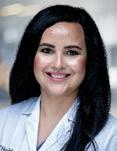
Cynthia Cantu, DO, FACP, is the Medical Director of the UTH De Zavala Primary Care Clinic and the Medical Management Program (MMP) at the Mays Cancer Center. She is committed to delivering patient-centered care in South Texas, with an emphasis on chronic disease management and cancer prevention. Dr. Cantu is a member of the Bexar County Medical Society.

Amelie G. Ramirez, DrPH, is an internationally recognized researcher in cancer and chronic disease health disparities, serving as chair and professor of Population Health Sciences at UT Health San Antonio. She is the founding director of the Institute for Health Promotion Research and leads community outreach at the Mays Cancer Center. Over the past 30 years, Dr. Ramirez has directed over 100 studies and communications projects aimed at reducing Latino cancer health disparities and improving health behaviors, while also leading the national Salud America! program to promote health equity for Latinos and all people.


By Kreny Savaliya, Nishita Maknojia and Ramaswamy Sharma, MS, PhD
Cystic Fibrosis (CF) is an inherited genetic disease caused by mutations which alter the sequence of DNA that codes for the cystic fibrosis transmembrane conductance regulator (CFTR) protein. The CFTR protein controls the movement of salt and water in and out of cells that are involved in producing mucus, sweat, tears, saliva and digestive enzymes. Mutations in the CFTR gene result in either the loss of CFTR protein or its malfunction, leading to reabsorption of salt and water by the cell. Consequently, water from secretions such as mucus is lost, making it excessively thick, effectively clogging multiple organs and damaging them, primarily in the respiratory, digestive and reproductive systems.
CF is an autosomal recessive disorder, meaning that an individual must inherit two defective copies of the CFTR gene, one from each parent, to develop the disease. A family history of CF significantly increases the risk of being a carrier of the disease. A carrier has one copy of the defective gene and is unaffected; however, the carrier can pass on the defective gene to their children. When both parents are carriers, there is a 25 percent chance that their child will have CF, a 50 percent chance that the child will be a carrier, and a 25 percent chance that the child will neither have the disease nor be a carrier.
To date, more than 2,500 different mutations have been identified in the CF gene, which consists of 27 exons and is located on chromosome
7q31.2. The first CF mutation identified, known as ∆F508, involves the deletion of three base pairs in exon 10 of the CF gene. As a result, the amino acid, phenylalanine, normally present at the 508th position of the CFTR protein, is lost. The ∆F508 mutation accounts for 70 to 75 percent of mutant CF alleles among Caucasian populations, especially those of Northern and Central European descent, making it the most prevalent. In other populations, such as African Americans, Hispanics, Asian Americans and Ashkenazi Jews, the frequency of this mutation is lower, with varying prevalence of other CFTR mutations. Among Caucasians with CF, approximately 72 percent are either homozygous, receiving the same mutation in their CFTR gene from both their parents, or are compound heterozygous, receiving different CFTR mutations from their parents. The most common mutations include ∆F508, G542X, N1303K, G551D, W1282X, 1717-1G→A R553X, 621+1G→T, and R1162X. Other mutations are rare and typically occur within specific families or communities.
The discovery of the CFTR gene in 1989 has allowed the development of diagnostic genetic tests for CF in patients and carriers. In 2001, the American College of Medical Genetics and Genomics (ACMG) and the American College of Obstetricians and Gynecologists (ACOG) jointly recommended screening for carriers by genetic testing for a minimal 25 CFTR core variants that were known to cause symptomatic CF
and were present in >0.1 percent of the population in the U.S. In 2004, a rare variant and a benign variant were removed from this list. With the advent of next-generation sequencing, it is now possible to easily analyze many more variants, including those that were recently discovered, for a lower price. Therefore, in addition to targeted testing for a minimum number of 23 variants, testing laboratories can now offer optional comprehensive screening of all exons and splice junctions of the CFTR gene as well as testing for more pathogenic variants.
Every state screens newborns for CF, which includes a blood test to measure immunoreactive trypsinogen (IRT), an enzyme made by the pancreas and present at higher levels in CFTR patients. While some states require IRT levels to be checked twice before conducting a DNA test, other states may check IRT levels once. If the mother received a positive prenatal CFTR genetic test and her baby had a positive newborn screening, a sweat chloride test is performed 48 hours post-birth. A sweat chloride test, also called a sweat test, measures the amount of salt in the baby’s sweat. A chloride value below 30 mmol/L is normal and values above 60 mmol/L is diagnostic of cystic fibrosis. Values between 30 mmol/L and 60 mmol/L are inconclusive and may suggest atypical CF such as CFTR-related metabolic syndrome wherein infants present with high levels of trypsinogen, normal or intermediate sweat chloride levels, and two CFTR mutations, one of which is not known to cause CF.
Limitations and false negatives are possible for these screenings. In some cases, mutations that lead to mild or atypical forms of CF may not be detected by standard targeted screening methods mentioned above, resulting in false negatives that delay the diagnosis. The use of next-generation sequencing (NGS) technology, which offers a more comprehensive analysis of the CFTR gene, will further improve the detection of rare and novel mutations.
Advances in screening have had direct implications in managing CF. Once considered to be fatal, early detection through newborn screening has allowed for prompt initiation of therapies that have significantly improved outcomes, with a predicted median survival age of around 50 years. These treatments include pancreatic enzyme replacement therapy, airway clearance techniques and CFTR modulators, which target the underlying genetic defect. While there is no known cure for CF, proper management can reduce complications, help prolong life expectancy and improve the quality of life.
References:
1. Cambraia A., Junior M.C., Zembrzuski V.M., Junqueira R.M., Cabello P.H., de Cabello G.M.K. Next-Generation Sequencing for Molecular Diagnosis of Cystic Fibrosis in a Brazilian Cohort. Dis. Markers. 2021 Feb: 9812074. doi: 10.1155/2021/9812074
2. Deignan J.L., Astbury C., Cutting G.R., Del Gaudio D., Gregg A.R., Grody W.W., Monaghan K.G., Richards S.; ACMG Laboratory Quality Assurance Committee. CFTR variant testing: a technical standard of the American College of Medical Genetics and Genomics (ACMG). Genet. Med. 2020 Aug;22(8):12881295. doi: 10.1038/s41436-020-0822-5
3. Grody W.W., Cutting G.R., Klinger K.W., Richards C.S., Watson M.S., Desnick R.J. Laboratory standards and guidelines for population-based cystic fibrosis carrier screening. Genet. Med. 2001 MarApr; 3(2), 149–154. doi: 10.1097/00125817-200103000-00010
4. Johns Hopkins Cystic Fibrosis Center. CFTR. Knowledge. https://hopkinscf.org/knowledge/cftr/. Accessed 25 Aug. 2024
5. National Institutes of Health Consensus Development Conference Statement on Genetic Testing for Cystic Fibrosis. Genetic Testing for Cystic Fibrosis. Arch. Intern. Med. 1999 Jul; 159(14):1529-39. doi:10.1001/archinte.159.14.1529
6. National Heart Lung and Blood Institute. Cystic Fibrosis Causes. 2023 Nov. U.S. Department of Health and Human Services. www.nhlbi.nih.gov/health/cystic-fibrosis/causes. Accessed 25 Aug. 2024
7. Petrova N., Balinova N., Marakhonov A., Vasilyeva T., Kashirskaya N., Galkina V., Ginter E., Kutsev S. and Zinchenko R. Ethnic Differences in the Frequency of CFTR Gene Mutations in Populations of the European and North Caucasian Part of the Russian Federation. Front. Genet. 2021Jun; 12, 678374. doi: 10.3389/ fgene.2021.678374
8. Shulman L.P. Cystic fibrosis screening. J. Midwifery Womens Health. 2005 May-Jun; 50(3):205-10. doi: 10.1016/j. jmwh.2004.12.015
9. Wang L., Freedman S.D. Laboratory tests for the diagnosis of cystic fibrosis. Am. J. Clin. Pathol. 2002 Jun;117 Suppl:S109-15. doi: 10.1309/XTM9-E4BU-C1Y5-JN10
10. Watson M.S., Cutting G.R., Desnick R.J., et al. Cystic fibrosis population carrier screening: 2004 revision of American College of Medical Genetics mutation panel. Genet. Med. 2004;6:387–391
11. Wilfond B.S., Parad R.B., Fost N. Balancing benefits and risks for cystic fibrosis newborn screening: implications for policy decisions. J. Pediatr. 2005 Sep;147(3 Suppl):S109-13. doi: 10.1016/j. jpeds.2005.08.019

Kreny Savaliya is a medical student at the University of the Incarnate Word School of Osteopathic Medicine, Class of 2028. She is passionate about pursuing a career in pediatrics to positively impact children’s health. She is also dedicated to participating in mission trips to provide medical care to underserved communities and broaden her understanding of global health issues.

Nishita Maknojia is a medical student at the University of the Incarnate Word School of Osteopathic Medicine, Class of 2028. She is interested in the impact of journalism on healthcare and how health education can play a pivotal role in improving health outcomes. She is also dedicated to learning about various health disparities faced by underserved communities.

Ramaswamy Sharma, MS, PhD, is a Professor of Histology and Pathology at the University of the Incarnate Word School of Osteopathic Medicine. He is interested in delineating the multiple molecular and cellular roles of melatonin in maintaining our quality of life. Dr. Sharma serves on the BCMS Publications Committee.

By James Mayberry, MD
Clinical geneticists represent a small subset of medical physicians, and training in this field, outside of being a clinical geneticist, is lacking at best. Just as clinical geneticists are rare, so too are the diseases they treat, which by definition, represent less than one percent of the patient population. Being able to identify when a finding can indicate a rare disorder takes a certain degree of specialized training in knowing what to look for and in what combination these findings might present. Therefore, it is not surprising that many physicians may have very little understanding of what clinical geneticists do and when to make a proper referral. My hope with this brief article is to help give some insight to other clinicians as to when a referral to a clinical geneticist should be considered.
First, it is important to know what clinical geneticists do. Most clinical geneticists do their primary training in pediatrics, internal medicine and obstetrics/gynecology, but can also be from other primary specialties such as family medicine. Training in clinical genetics and genomics consists of learning to diagnose and manage rare disorders, which can be found in every field of medicine and in patients across all ages. This means clinical geneticists must be trained to see a wide range of patients in both the pediatric, adult, prenatal and geriatric populations. Clinical geneticists are also trained in biochemical genetics, prenatal genetics and cancer genetics. Although all clinical geneticists are trained to see patients with biochemical/metabolic disorders, some will get further training and certification in biochemical genetics. As for prenatal and cancer genetics, most of these patients are primarily managed by specialists and genetic counselors within those fields. So, given these facts, when should you consider referring a patient to see a clinical geneticist? What
follows is only a small sample of when a referral should be considered, as a comprehensive review would require a book.
Newborns with genetic disorders will often be identified either by prenatal screening, shortly after birth by findings on a physical exam, or through newborn screenings, which screens for as many as 55 genetic disorders, most being treatable metabolic disorders. Prenatal screening has improved greatly with the use of cell free fetal DNA in addition to advancements in prenatal ultrasound that allow detection of many genetic disorders beyond common chromosomal disorders. At birth, physical exams will often detect cranial, facial or skeletal dysmorphologies that went undetected prenatally and are suggestive of a genetic disorder. Newborn screenings in Texas are done between 24 to 48 hours after birth and then again when they are 8 days of life or later. They are used to screen for both core and secondary genetic/metabolic disorders in addition to a two point of service test for congenital heart defects and a hearing test. This process allows for many neonatal genetic disorders to be detected before they leave the hospital.
Despite the process above, there are many genetic or metabolic disorders that evade detection until later in childhood or even adulthood. Common findings that might suggest an underlying genetic condition include delays in development (not meeting milestones), regression of previously attained milestones, intellectual disability, autistic-like behavior, feeding difficulties, failure to thrive, hyperphagia, short stature, or accelerated growth that moves across multiple growth curves. Sometimes metabolic disorders that were not detected on newborn screening will present themselves the first time the infant fasts overnight for sleep, develops a fever from an infection or any other stressor
that leads to a catabolic state. Signs and symptoms may include feeding intolerance, loss of appetite, vomiting, irritability, lethargy, or if severe, may present with loss of responsiveness. Labs suggestive of underlying metabolic disorders will include hyperammonemia, hypo/hyperglycemia, electrolyte abnormalities, ketonuria (or lack of ketones), hyperuricemia, lactic acidosis or metabolic acidosis. So, even after the neonate leaves the hospital, it is important to be vigilant of any signs or symptoms that could suggest an undetected metabolic or genetic disorder.
Thankfully, in the United States, just taking your child to their regularly scheduled checkups will typically allow for these types of signs and symptoms to be detected and hopefully generate a proper follow up to either a specialist or clinical geneticist for diagnosis. Even so, there are always some disorders that either continue to evade detection or do not show their first signs until well into adulthood.
As mentioned, to list all the possible ways that metabolic or genetic disorders could present would require a book, so I have decided to list some of the more common findings by systems. My hope is that you will read through this list and that if you come across a patient with these findings, you might consider if they would benefit from a referral to a clinical geneticist. Some of these findings can be found in normal patients as well, and so considering the whole clinical picture is often necessary.
HEENT/Dental: Craniosynostosis, macro/micro cephalic, hydrocephalus, abnormal spacing of eyes (too close or wide apart), abnormal shape to eyes, upturned/downturned palpebral fissures, epicanthal folds, unexplained vision loss, findings on ophthalmic exam that are associated with genetic conditions (lacuna, cherry red spot), dislocated/subluxation of lens, cataracts in children, leukocoria, blue sclera, retinopathy, heterochromia, unexplained hearing loss, anosmia, central incisor tooth, abnormal dentinogenesis, midline cleft lip/palate, acoustic schwannomas, absent ear(s), microtia, malformed ears (shape, low set, abnormally positioned).
Muscle/Skeletal: Muscle atrophy, multiple unexplained episodes of rhabdomyolysis (unusual chronic elevations in CK), exercise intolerance, short/tall stature (endo as well), torso/limb disproportion, limb asymmetry, arachnodactyly, polydactyly, unusually small/large hands, abnormal formation of toes or fingers (syndactyly), single palmer crease, arthrogryposis, club foot, skeletal malformations, abnormal bone development, osteopenia, rickets/osteomalacia, pectus excavatum, multiple unexplained fractures, hypermobility (common in normal patients as well), multiple joint dislocations, scoliosis.
Dermatology: Multiple Café-au-Lait spots (smooth or Coast of Maine morphology), unexplained rashes, unusual number of nevi or in unusual locations (axillary, groin), unusual sensitivity to sun exposure, unexplained hypo/hyper pigmentation of skin or hair, unusual hair distribution (synophrys), stretchy/velvety skin, poor wound healing, dystrophic skin changes, dry scaly skin, telangiectasia, angiokeratomas, abnormal blister formations, hypohidrosis.
Neurology/Neuromuscular: Progressive muscle weakness, unexplained neurodegeneration, hypotonia (neonates, infants), unexplained movement disorders (chorea, dystonia, myoclonic jerks), ataxia, seizures, unexplained peripheral neuropathy, spasticity (children, toe walking when feet are unable to be placed flat), hand flapping/wringing, autonomic dysfunction, encephalopathy, stroke-like episodes, CNS malformations, spinal anomalies, unexplained findings on MRI/CT imaging.
Cardiovascular: Hypertrophic cardiomyopathy, unexplained cardiomyopathy, unexplained aortic aneurysms/dissections, unexplained arrythmias, cardiac/vascular malformations, valvular malformations, cyanotic spells.
Pulmonology: Lung malformations, multiple episodes of spontaneous pneumothorax, pulmonary cyst, central apnea, chronic unexplained pulmonary/sinus infections, chronic bronchitis.
Renal/Urology: Unexplained renal failure (especially in neonates, children), renal/urological malformations, multiple renal cysts, hypo/ epispadias.
Endocrine/Biochemical: Unexplained lipid findings (elevations in LDL, triglycerides, chylomicronemia, elevations in VLDL, fatty acids, acyl-carnitines), unexplained hyper/hypogonadotropic hypogonadism, early/delayed puberty, ambiguous genitalia, unexplained infertility, bilateral absence of vas deferens, cryptorchidism, microphallus, macroorchidism, uterine malformations, premature ovarian failure, unexplained disorder of sexual development, short stature, accelerated growth, adrenal failure, unusual body odors (musty, maple syrup, sweaty feet), fasting intolerance.
Gastrointestinal: Heterotaxy, diaphragmatic hernias, gastroschisis/ omphalocele, chronic pancreatitis, pancreatic insufficiency, GI malformations, unexplained cirrhosis, hepatic failure, hepatomegaly, splenomegaly, biliary problems, large number of polyps on colonoscopy, Hirschsprung disease, anal malformations, unexplained malabsorption, food intolerances, vitamin deficiencies.
Hematology: Unexplained chronic anemia, unexplained multiple episodes of hemolysis, unusual easy bruising, coagulations disorders, elevations in homocysteine, cytopenia, poor immunity, lymphatic anomalies.
Again, this list is not meant to be comprehensive but as you can see, genetic disorders can be found in every system and involve every field of medicine. It is important to know that a referral to a specialist in those fields can also be a good first step as most specialists will be able to determine when there is need for a genetics referral as well. In fact, that can in many cases be the best answer to avoid an unnecessary referral when you are unsure what is causing the signs or symptoms that have you considering that your patient may have a rare disease presentation. It is also important to be familiar with your common genetic cancer syndromes and refer them to a genetics counselor who specializes in cancer genetics so they can determine if the patient would benefit from genetic testing for themselves or their family. I would also caution against doing genetic testing on your own as knowing the best test to pick and how to properly interpret the results are best left to either a clinical geneticist or specialist who has been trained to do those tests. I hope you have found this to be helpful, and more importantly, I hope the next time you see a patient with unexplained signs and symptoms suggestive of genetic or metabolic disorder, you will consider making the referral.

James Mayberry, MD, is an Assistant Professor in the Clinical Applied Sciences and Education Department at the University of the Incarnate Word School of Osteopathic Medicine. He is board certified in Family Medicine and trained in Clinical Genetics and Genomics. Dr. Mayberry is a member of the Bexar County Medical Society.

By Soma Jyothula, MD
Yes, the purists will roll their eyes on the title as it flouts a few literary rules. In my honest opinion, it is the best description for my three-plus years of membership. Anyway, the relationship started during a once-in-a-lifetime pandemic event that humans experienced. In the course of the lockdown, masking, social distancing, etc., my social activities got severely curtailed. Lo and behold, a whole virtual world opened up on the worldwide web. Amidst all the browsing, an ad landed in my social media account advertising 23andMe. It was a targeted ad related to my browsing history. Facing mortality and seeing the frailty of human life in real time made me ponder about my own family lineage. One night during my bedtime online browsing ritual, I succumbed to the temptation and signed up for the service. Once I received the kit, I spit my saliva into it and, viola, in three weeks I had my ancestry report.
DNA genetic sequencing technology has evolved rapidly since 1977, after the first DNA sequencing method was developed by Dr. Frederick Sanger. Since then, the speed of sequencing has exponentially increased with a reciprocal drop in cost. Now, sequencing is so affordable that you can buy the machines and reagents off the shelf to run experiments in your garage. As an evolution of this, direct-to-consumer genetic tests have become available in the U.S. Ancestry.com was the pioneer, followed by FamilyTreeDNA and 23andMe. The services provided focus on Y chromosome and mitochondrial DNA sequencing. As a refresher on genetics, the Y chromosome is inherited from your father and acts as a signature of your lineage on your paternal side. Mitochondria are inherited from your mother and DNA sequence can be used to determine your maternal lineage. 23andMe goes beyond genetic lineage analysis and provides you with information on almost 100-plus reports on health predispositions, pharmacogenetics, carri-
er status, wellness and traits. As much as the reports are intriguing, I wanted to see how my genetic sequence determined my preference for chocolate ice cream over vanilla flavor (truth sic).
Home Sapiens evolved in eastern Africa. All of the eight billion plus humans on the planet evolved from a single male 275,000 years ago and a single female around 200,000 years back. How can we make this determination? As stated above, all males carry a Y chromosome from their father. As the Y chromosome moves down the generations, it starts accumulating slight changes in DNA sequence (polymorphisms). Similar changes are noted in mitochondrial DNA as mitochondria are found in the ovum only and are passed from mothers to children. Specific patterns in these DNA sequences, called haplotypes, are used to construct family trees. Now, unless we have sequenced all our ancestors, how can we delineate the lineage? The DNA sequence data on polymorphisms comes from publicly available data from the Human Genome Diversity Project, HapMap, and the 1000 Genomes project. 23andMe uses data from 12,000 research-consented customers and 2,412 noncustomers as its primary database. As ethnicity and geographic location data is available from these databases, comparison of DNA polymorphisms determines ancestry. I am 100 percent south east Indian and there are 289 people whose DNA sequence data became the control to make that determination.1 23andMe also uses available DNA sequences from historical samples of humans who were buried in the past and viable DNA extracted from archeological specimens.2 Unfortunately, I am not related to any of the archaic humans.
23andMe provides various health and traits reports beyond ancestry. For example, based on DNA sequence data, it can give you a report on how likely you have red hair. My report says no red hair and is congruent with my black albeit graying hair now. It has wellness reports
about whether one will experience an alcohol flush reaction. It provides a report on health predisposition to depression, hypertension as an example, and whether you have increased likelihood. Further, you have data on carrier status for various genetic disorders like cystic fibrosis and beta thalassemia.
Let us do a deep dive into the validity of these reports. Genetic disorders like cystic fibrosis (CF) have been extensively studied and we know of over 1,900 mutations in CFTR gene. If a child inherits one copy of the mutant gene from each of the biological parents, the child will develop CF. 23andMe evaluates 29 known CFTR gene mutations associated with CF. So, there is a high chance to miss other known CFTR mutations associated with the disease. FDA has classified genetic tests as medical devices since 2008. In 2015, the company received approval to provide risk assessment for 10 disease states.3 Both the company website and FDA state that the tests are for risk assessment and not to be used for diagnostic purposes. This is consistent with the example of CF gene carrier reports as only a small fraction of known disease-causing mutations are tested.
Next comes the various predispositions for common and chronic illnesses like hypertension (HTN). HTN, like many chronic illnesses, is caused by multiple polymorphisms with a considerable influence from lifestyle choices. How can a gene sequence test predict the likelihood of HTN? This is where big data plays a role. 23andMe has sold 14 million kits and 80 percent of customers have signed up as research subjects. The chronic illness and health traits are based on the information provided by these customers on various questionnaires. The company uses a novel polygenic model and compares it to reported phenotypes. This helps in developing models to predict the likelihood
of various health conditions. Even though millions of people have reported their health conditions and provided gene data, it does not represent an ideal sample human population (8 billion and plus). Further, the health traits and conditions are self-reported, and amplification of various biases can have a significant impact on results.
Direct to consumer tests can provide useful information on ancestry and finding distant relatives who have signed up for the service. The reports on health and traits by 23andMe need to be taken with a grain of salt. They are good for coffee table conversations like your predisposition to like cilantro or not. If you are planning to undergo an evaluation for a genetic disorder, speak to your physician about the ideal test for you and do not use 23andMe as a surrogate.
References:
1. www.23andme.com
2. Narasimhan V.M. et al. The formation of human populations in South and Central Asia. Science. 2019 Sep 6;365(6457). PMID: 31488661; PMCID: PMC6822619
3. https://www.fda.gov/news-events/press-announcements/fda-allows-marketing-first-direct-consumer-tests-provide-genetic-risk-information-certain-conditions

Soma Jyothula, MD, FCCP, is a practicing pulmonary and critical care physician, and is the Chief of Pulmonary Medicine and Lung Transplantation at Methodist Hospital. Dr. Jyothula is a member of Bexar County Medical Society and serves on the Publications Committee.


By Neha Momin and Ramaswamy Sharma, MS, PhD
Endometrium refers to the innermost lining of the uterine cavity. Its major functions are to cover the muscular tissue of the uterus, the myometrium, and thereby keep the uterine cavity always open by preventing self-adhesion of its walls, as well as provide an optimal environment for growth of the fertilized egg. Fertilization allows the endometrium to remain and become part of the placenta, providing support during the gestation period. If fertilization does not take place, a part of the endometrium is shed during menstruation, immediately followed by its renewal in response to the hormone, estrogen. Approximately 190 million women worldwide, most commonly between 30 to 40 years of age and in their reproductively active phase of life, have endometriosis.1 In this condition, endometrium-like tissue arises in locations outside of the uterus, such as in the ovary, and responds to changes in estrogen. While 25 percent of patients have no symptoms, others may suffer from pelvic pain, irregular as well as painful menstruation, and severe pain during sexual intercourse, urination and bowel movements. Endometriosis can also affect mental health; a recent study reported depression and a feeling of hopelessness and failure by more than 50 percent of its cohort of 27,840 participants with endometriosis.2 About 30 to 40 percent of women become infertile, and a few patients develop endometrial cancer. Endometriosis can take a toll on the quality of life, with patients experiencing challenges due to reduced social activity associated with chronic pain, increased healthcare costs and increased incidence of depression.3
Diagnosing endometriosis can be challenging due to variability of symptoms between different patients and its overlap with other gynecological conditions; there are also no specific biomarkers that correlate with the disease.4 Not surprisingly, patients face a four- to almost eleven-year delay in diagnosis, starting from symptom onset to surgical confirmation of the condition.3 A clinical diagnosis is often made by evaluating the medical history of the patient, including their history of menstrual symptoms and presence of continuous pelvic pain, imaging modalities such as magnetic resonance imaging (MRI), and physical exams. However, a definitive diagnosis requires laparoscopic surgery to view endometrial tissue, cysts, lesions and scar tissue in the pelvic region, followed by pathological analysis of tissue biopsied during the laparoscopic procedure.4 The severity of the disease may then be classified with a revised American Society of Reproductive Medicine (rASRM) score, ENZIAN score, Endometriosis Fertility Index score or an American Association of Gynecological Laparoscopists score, which has to be yet validated.
A family history of endometriosis is one of the strongest predictors of developing endometriosis, with almost 50 percent of cases associated with genetic makeup, resulting in familial clustering of the disease.5,6 Specifically, having a first-degree relative, such as a mother or sister, increases the risk of endometriosis by four- to eight-fold; having second- or third-degree relatives, such as aunts, cousins or grandmothers, also heightens the risk of developing endometriosis.7 Patients
with a family history of endometriosis have higher rARSM scores and tend to develop ovarian endometriosis.8
East Asian and Southeast Asian women are more susceptible to endometriosis, and recent genome-wide association studies have determined race/ethnicity-specific genetic susceptibility loci for developing endometriosis.9 Approximately 40 genes have been identified that correlate with developing endometriosis. However, none of these have been specifically correlated with familial endometriosis. This is because endometriosis can be caused by a variety of mechanisms that are associated with different genes and proteins. Since lifestyle and the environment also influence the development of endometriosis, epigenetic alteration of genes has also been identified.10 Epigenetic changes do not affect DNA sequence as mutations do; instead, they chemically modify DNA, such as by methylation, thereby determining whether a particular gene will be expressed. Epigenetic changes can also be inherited. Therefore, it is important for a patient to be aware of their family history as it can help speedily differentiate endometriosis and its complications such as infertility from other gynecological disorders. Not only would it prevent misdiagnosis, but it would also reduce the delay in diagnosis and prevent long-term complications associated with diagnostic delays. In a recent case-control study, researchers developed a questionnaire to obtain data on menstrual cycles, parity, gravidity and family history of endometriosis from prospective patients for diagnosis. They compared it to patients with proven endometriosis and patients with no endometriosis. Their questionnaire helped identify patients with a high risk of endometriosis.11 Similar screening tools can be easily used within clinics to reduce the diagnostic delays for many patients. Additionally, it would provide a path toward standardizing the steps to a clinical diagnosis.
Identifying risk factors such as family history provides greater insight into the potential mechanisms of endometriosis. Risk factor identification and risk assessment are critical for developing more relevant and personalized treatment plans for patients and for predicting complications that could arise from the condition. Complications such as infertility, chronic pain and depression can drastically change a patient’s life. Overall patient health must be emphasized when treating chronic medical conditions. Taking steps to anticipate endometriosis through family history analysis has the potential to improve patient outcomes and quality of life.
References:
1. World Health Organization. (n.d.). Endometriosis. World Health Organization. Retrieved August 20, 2024, from https://www.who. int/news-room/fact-sheets/detail/endometriosis
2. Becker, K., Heinemann, K., Imthurn, B., Marions, L., Moehner, S., Gerlinger, C., Serrani, M., & Faustmann, T. (2021). Real world data on symptomology and diagnostic approaches of 27,840 women living with endometriosis. Scientific Reports, 11(1). https://doi.org/10.1038/s41598-021-99681-3
3. Agarwal, S.K., Chapron, C., Giudice, L.C., Laufer, M.R., Leyland, N., Missmer, S.A., Singh, S.S., & Taylor, H.S. (2019). Clinical diagnosis of endometriosis: a call to action. American Journal of Obstetrics and Gynecology, 220(4), 354.e1–354.e12. https://doi. org/10.1016/j.ajog.2018.12.039
4. Yale Medicine. (n.d.). Endometriosis. Yale Medicine. Retrieved August 20, 2024, from https://www.yalemedicine.org/conditions/endometriosis
5. Verket, N.J., Falk, R.S., Qvigstad, E., Tanbo, T.G., & Sandvik, L. (2019). Development of a prediction model to aid primary care physicians in early identification of women at high risk of developing endometriosis: cross-sectional study. BMJ open, 9(12), e030346. https://doi.org/10.1136/bmjopen-2019-030346
6. Stefansson, H., Geirsson, R.T., Steinthorsdottir, V., Jonsson, H., Manolescu, A., Kong, A., Ingadottir, G., Gulcher, J., & Stefansson, K. (2002). Genetic factors contribute to the risk of developing endometriosis. Human reproduction (Oxford, England), 17(3), 555–559. https://doi.org/10.1093/humrep/17.3.555
7. Audebert, A., Lecointre, L., Afors, K., Koch, A., Wattiez, A., & Akladios, C. (2015). Adolescent Endometriosis: Report of a series of 55 cases with a focus on clinical presentation and long-term issues. Journal of Minimally Invasive Gynecology, 22(5), 834–840 https://doi.org/10.1016/j.jmig.2015.04.001
8. Metzler, J.M., Imesch, P., Dietrich, H., Knobel, C., Portmann, L., Neumeier, M.S., & Merki-Feld, G.S. (2024). Impact of family history for endometriosis, migraine, depression and early menopause on endometriosis symptoms, localization and stage: A case control study. Europe-
an Journal of Obstetrics, Gynecology, and Reproductive Biology, 293, 36–43. https://doi.org/10.1016/j.ejogrb.2023.12.016
9. Sheu, J.J., Lin, W.Y., Liu, T.Y., Chang, C.Y., Cheng, J., Li, Y.H., Chen, C.M., Tseng, C.C., Ding, W.Y., Chung, C., Hwang, T., Chen, P.H., & Tsai, F J. (2024). Ethnic-specific genetic susceptibility loci for endometriosis in Taiwanese-Han population: a genome-wide association study. Journal of Human Genetics, 10.1038/s10038-024-01270-5. Advance online publication. https://doi.org/10.1038/s10038-024-01270-5
10. Bunting, K. (2022, August 24). Is Endometriosis Hereditary? MyEndometriosisTeam. https://www.myendometriosisteam.com/ resources/is-endometriosis-hereditary
11. Chapron, C., Lafay-Pillet, M.C., Santulli, P., Bourdon, M., Maignien, C., Gaudet-Chardonnet, A., Maitrot-Mantelet, L., Borghese, B., & Marcellin, L. (2022). A new validated screening method for endometriosis diagnosis based on patient questionnaires. eClinicalMedicine, 44, 101263. https://doi.org/10.1016/j. eclinm.2021.101263


Neha Momin is a medical student at the University of the Incarnate Word School of Osteopathic Medicine, Class of 2027. Her interests include infertility and maternal health.
Ramaswamy Sharma, MS, PhD, is a Professor of Histology and Pathology at the University of the Incarnate Word School of Osteopathic Medicine. He is interested in delineating the multiple molecular and cellular roles of melatonin in maintaining our quality of life. Dr. Sharma serves on the BCMS Publications Committee.


By Leslie Walter, MS
Cytomegalovirus (CMV) is a common virus for most people but can cause serious health issues for newborn babies. CMV is the most common infectious cause of birth defects in the United States.
According to the CDC, about one in 200 babies is born with congenital CMV. The CDC also reports that about one in five babies with congenital CMV will have birth defects or long-term health problems, like hearing loss. Young children are a common source of CMV. By 5 years old, one in three children will have been infected with CMV. High amounts of the virus can stay in a child’s body fluids like saliva and urine for months after the infection.
Most babies who have congenital CMV appear healthy at birth but may develop symptoms over time. The most common of these late-occurring signs are hearing loss and developmental delay. A small number of babies may also develop vision problems.
Congenital CMV infection can be identified by testing a newborn baby’s urine (preferred), saliva or blood. These tests must be done within two to three weeks after the baby is born to confirm if the baby has congenital CMV.
Once infected, your body retains the virus for life. Most people don’t know they have cytomegalovirus because it rarely causes problems in healthy people.
If a woman is pregnant or if her immune system is weakened, CMV is cause for concern. Women who develop an active CMV infection during pregnancy can pass the virus to their unborn babies through pregnancy, through delivery or through breast milk. For people who have weakened immune systems, especially people who have had an organ, stem cell or bone marrow transplant, CMV infection can be fatal.
Most healthy people who are infected with CMV may experience no symptoms and some may experience minor symptoms. CMV spreads from person to person through body fluids, such as
blood, saliva, urine, semen and breast milk. There is no cure, but there are medications that can help treat the symptoms.
Today babies who are tested at birth for hearing loss and who fail will be tested for CMV. Hearing loss is common in newborns with CMV. Some babies can have hearing loss at birth or can develop it later. This can happen even to babies who passed the newborn hearing test or didn’t have any other signs at birth. Babies with congenital CMV infection should have regular hearing checks.
Babies who show signs of congenital CMV infection at birth can be treated with antivirals. These may decrease the severity of hearing loss or at least prevent the loss from becoming greater. Babies who get treated with antivirals should be closely watched by their doctor because of possible side effects and should have regular hearing checks.
Texas HB 2478 was passed in September, 2023 to provide testing for congenital CMV. Approximately 40,000 infants each year are born infected with CMV. If the newborn or infant receives a positive test for congenital cytomegalovirus, the entity that performed the test shall provide the newborn’s or infant’s parents with: the results of the test; information on the potential effects of congenital cytomegalovirus and the available treatment options; and referral to an appropriate physician or facility for the treatment of congenital cytomegalovirus.
While there are no ways to eliminate the risk of having CMV, it’s important to reduce the chance of getting and spreading the virus. Wash hands often with soap and water, especially after changing diapers and helping a child in the bathroom, do not share food, utensils, cups or pacifiers with a child.
Leslie Walter, MS, is the Transition, Outreach and Alumni Coordinator for Sunshine Cottage, A Listening and Spoken Language School for Deaf Children.


By Trisha Doucette

Caring for an aging parent with cognitive changes or a loved one with physical challenges or other chronic diseases can be overwhelming. When faced with the responsibility, family caregivers now have resources for emotional and educational support.
The faculty and staff of the Caring for the Caregiver program at the School of Nursing at UT Health San Antonio and the Glenn Biggs Institute for Alzheimer’s and Neurodegenerative Diseases at UT Health San Antonio are ready to help improve caregivers’ quality of life. Both programs offer resources for counseling and support groups and evidence-based educational tools to match specific types of caregivers who are assisting loved ones with dementia and other medical conditions. The knowledge of understanding what is occurring and what could possibility come provides a preparedness that can empower caregivers to cope with what is often a lengthy and ambiguous process.
“There is a very unique dynamic when caring for a parent as an adult child. There’s a role reversal and often times a sandwich generation if you’re caring for your own life in addition to trying to help a parent navigate dementia,” said Melissa Flores, LPC, clinical counselor and community programs coordinator with the Glenn Biggs Institute. For a caregiver, considering a parent’s emotional wellbeing stemming from loss of independence and identity while acknowledging their own feelings of an altered parent-child relationship and disrupted home life is often beyond their capacity to handle. “While we cannot control the situation or things we have lost, we can control how we respond to those adversities. We can control every action we take through the course of a day,” said Flores.
Roxana E. Delgado, PhD, director for the Caring for the Caregiver program, explained that one of the main challenges military and Veteran caregivers face is the complexity of care of a Veteran with multiple comorbidities that may include other service-connected chronic diseases and their military experience. “Since 2023, we have collaborated with the Department of Veterans Affairs to include tailored programming for caregivers of wounded, ill and injured Veterans,” Dr. Delgado
said, in addition to educational seminars that address the challenges of families caring for a loved one with dementia.
The Caring for the Caregiver program recently earned a national award for its comprehensive education and support for families living with dementia. The 2024 Maude’s Awards for Innovations in Alzheimer’s Care reward innovations that enrich the quality of life for persons living with Alzheimer’s disease and related dementias, as well as their care partners.
Finding support to combat the burden that caregivers are faced with is their first step in self-care. For some people that might be through their faith community or social groups but there are opportunities for more mental-specific support. Connecting caregivers with counseling and support groups of individuals going through similar situations can be profoundly impactful. “This is why it is imperative to have programs that can equip, train and empower caregivers to attend to the needs of their loved ones while they care for themselves,” said Dr. Delgado.
To seek support, visit: Caring for the Caregiver, School of Nursing at UT Health San Antonio: www.utcaregivers.org e-mail: utcaregivers@uthealthsa.org Glenn Biggs Institute for Alzheimer’s and Neurodegenerative Diseases at UT Health San Antonio www.biggsinstitute.org

Trisha Doucette is the editor of San Antonio Medicine magazine, Cordillera Ranch Living magazine and Rio magazine.

By Rosalie Cisneros, City of San Antonio Metropolitan Health District
During the month of November, the City of San Antonio Metropolitan Health District (Metro Health) commemorates National Diabetes Awareness Month, a time for our community to come together and create awareness about the diabetes epidemic.
Diabetes is a serious problem, especially in San Antonio, where it is the seventh leading cause of death. Many people with diabetes don’t know they have it, and this can lead to serious health issues. Men are hospitalized for diabetes-related problems more often than women, with about 3,000 men going to the hospital in 2021. Men also have a much higher chance of needing amputations because of diabetes. Sadly, Black and Hispanic/Latino men face the highest death rates from this disease. It’s important for us to talk about diabetes and help those who are affected.
Metro Health’s Diabetes Prevention and Control program offers no-cost health education workshops that are designed for prevention and to teach people the skills they need to live a better and longer life. An important pillar of these workshops is the peer-to-peer relationships developed amongst the participants attending the workshops, which provides support systems for those who are working to control and manage diabetes.
In addition to workshops, the Diabetes Insulin Assistance Program aims to support those struggling to afford insulin prescriptions. This program covers up to $100 for each insulin prescription, including refills, until funds are exhausted. Open to all San Antonio/Bexar
County residents facing financial difficulties with insulin, the program is available at 19 participating H-E-B pharmacy locations. To enroll, individuals can complete a consent form at the pharmacy or online, allowing Metro Health to provide information about educational workshops. While attending a workshop is not required to receive assistance, it is encouraged. Furthermore, the program offers free insulin delivery within a 15-mile radius of participating pharmacies, ensuring greater accessibility for those in need.



University Medicine Associates

Health Texas Medical Group

2023
By Bexar County Medical Society (BCMS)
2024
2024 Medical Group of the Year Award

Texas Oncology
100% Group Practice of the Year

2024 Chief Nursing Officer of the Year







Community First Health Plans Clinical Pathology Associates
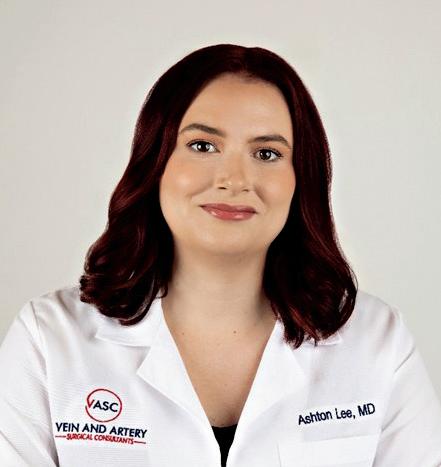

Greater SA Emergency Physicians (GSEP)

Every year, the Bexar County Medical Society recognizes the great efforts of local female leaders who excel in the delivery of patient care through their hard work and dedication to the honored practice of medicine. The 2024 Annual Women Leaders in Medicine event was held on September 18, 2024 at the UIW Skyroom. The event was attended by more than 430 medical community members in Bexar County.



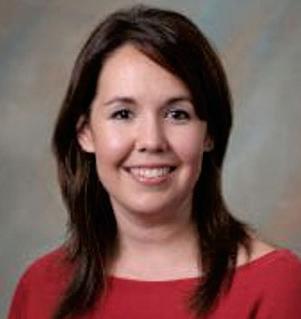




M&S Radiology
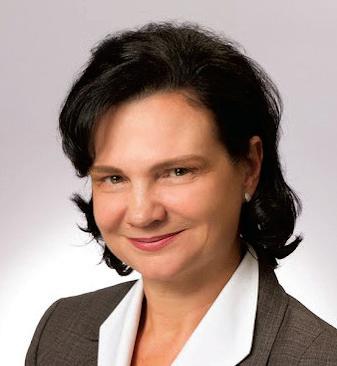




By Bexar County Medical
Society (BCMS) and UT Health San Antonio
BCMS also recognizes the following UT Health SA Physicians

Professor/Clinical Department of Family & Community Medicine

Assistant Professor/Clinical Director of Mohs and Cutaneous Surgery Department of Medicine/Dermatology


Associate Professor/Clinical Department of Family & Community Medicine


Assistant Professor/Clinical Department of Medicine/ Hospital Medicine

Professor/Clinical Department of Medicine/Hospital Medicine Vice Chair for Faculty Development

Associate Professor/Clinical Department of Medicine/ Infectious Diseases
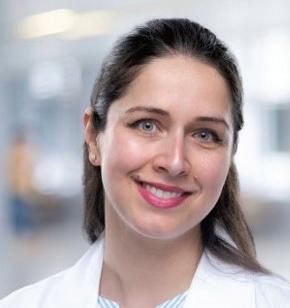
Associate Professor/Clinical Department of Medicine/ General Medicine & Medicine/ Rheumatology
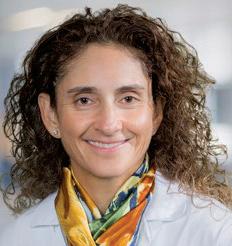
Professor/Clinical A.B. Alexander Distinguished Chair in Oncology Department of Medicine/ Hematology-Oncology Mays Cancer Center


Associate Professor/Clinical Director of the Lung Transplant Program Transplant Institute Department of Medicine/ Pulmonary Disease

Assistant Professor/Clinical Department of Medicine/ Pulmonary Disease

Associate Professor/Research Department of Rehabilitation Medicine

Assistant Professor/Clinical Department of Medicine/ Gastroenterology

Assistant Professor/Clinical Department of Radiology

Associate Professor/Clinical Department of Surgery/Trauma Surgery

Associate Professor/Clinical Department of Medicine/ Infectious Diseases


Assistant Professor/Clinical Department of Radiology

Associate Professor/Clinical Department of Surgery/Trauma Surgery

Associate Professor/Clinical Department of Medicine/ Hospital Medicine
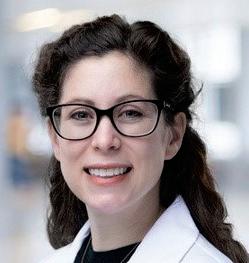
Assistant Professor/Clinical Department of Rehabilitation Medicine

Professor, Department of Urology, Assistant Dean for Faculty, Office for Faculty











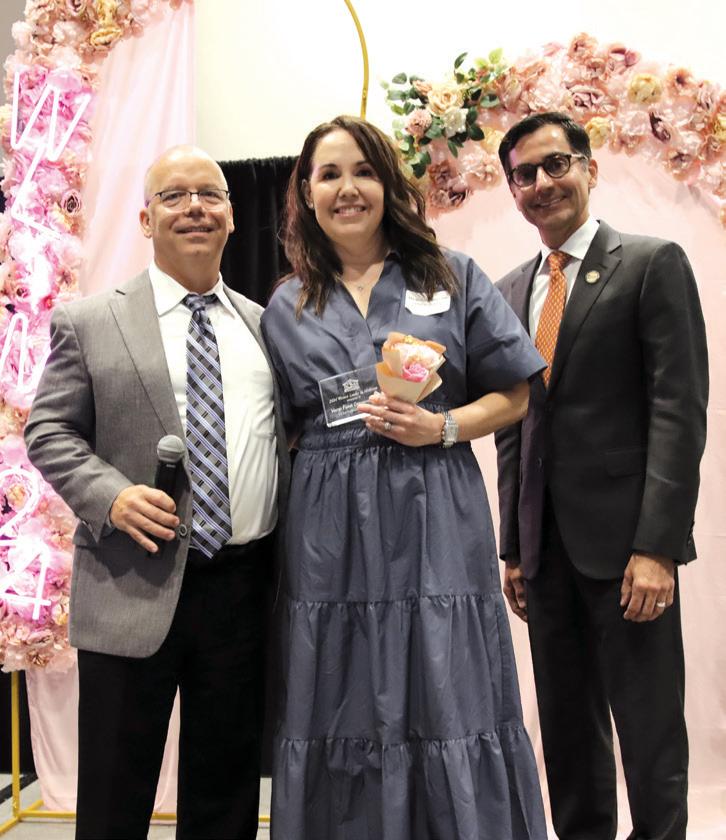

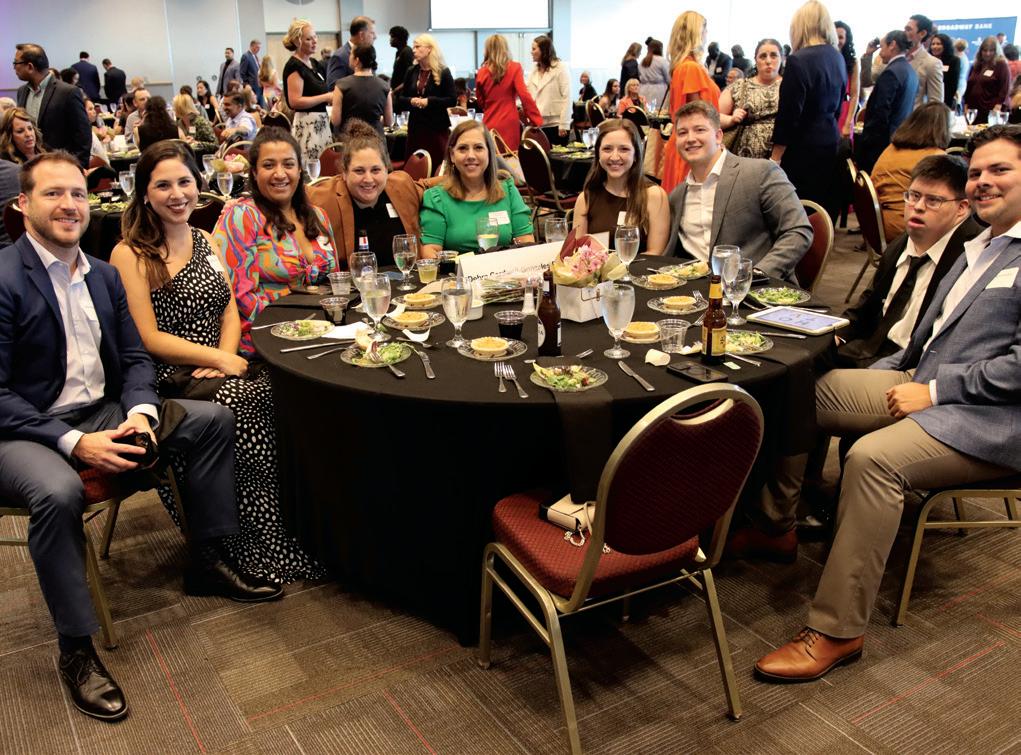



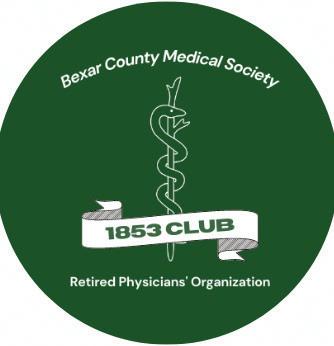
The Bexar County Medical Society hosts luncheons throughout the year for retired member physicians, known as the “1853 Club.” These luncheons serve as an opportunity for retired members to reconnect with colleagues and friends while becoming informed on various topics presented by guest speakers. At the
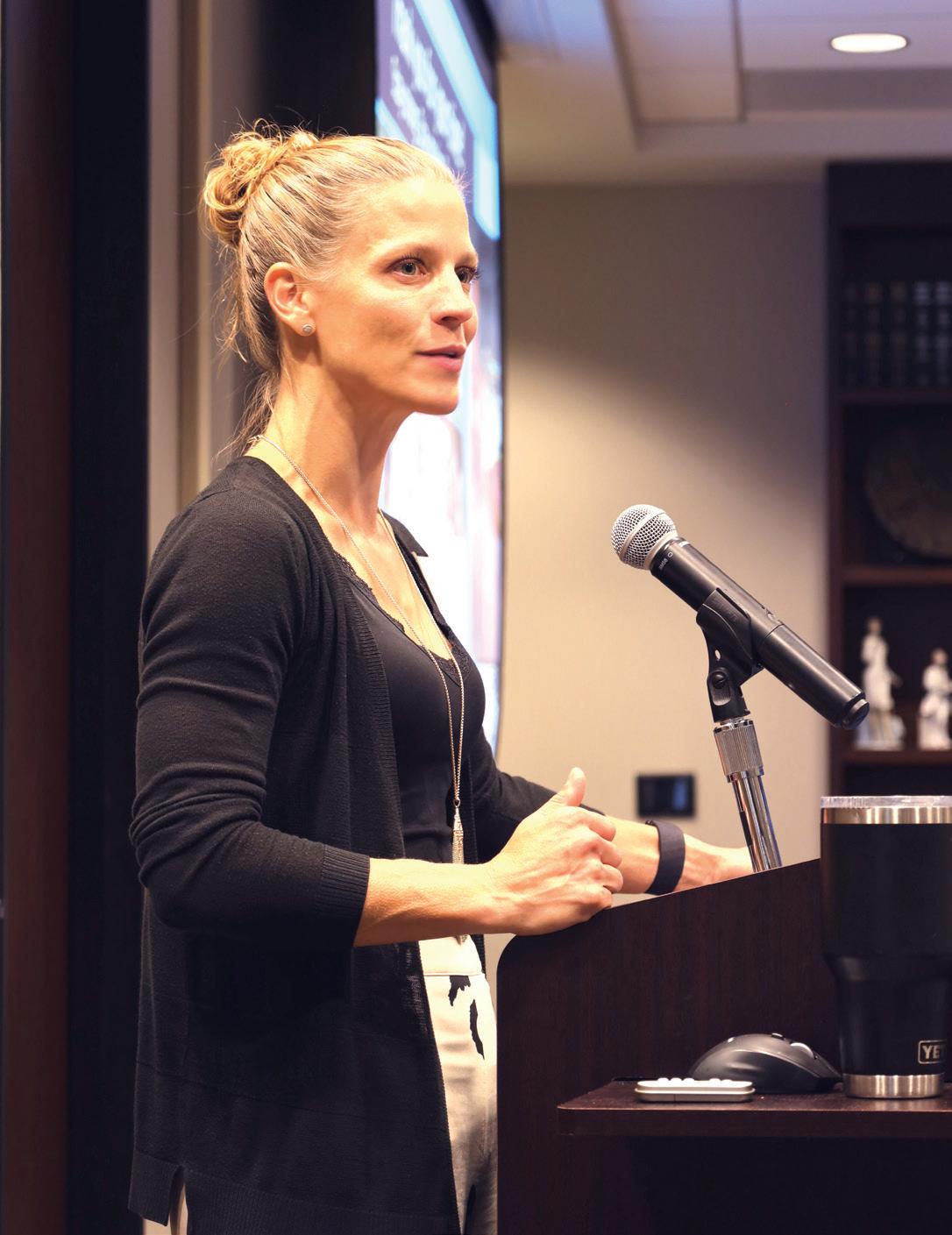

Lunchon on October 1, guest Jamie L. Lynch, MD, an Orthopedic Surgeon with TruOrtho, spoke on “Keeping a Healthy Lifestyle through Safe Mobility.” If you are a retired or life BCMS member and are interested in joining the 1853 Club, please call BCMS at 210-301-4398.
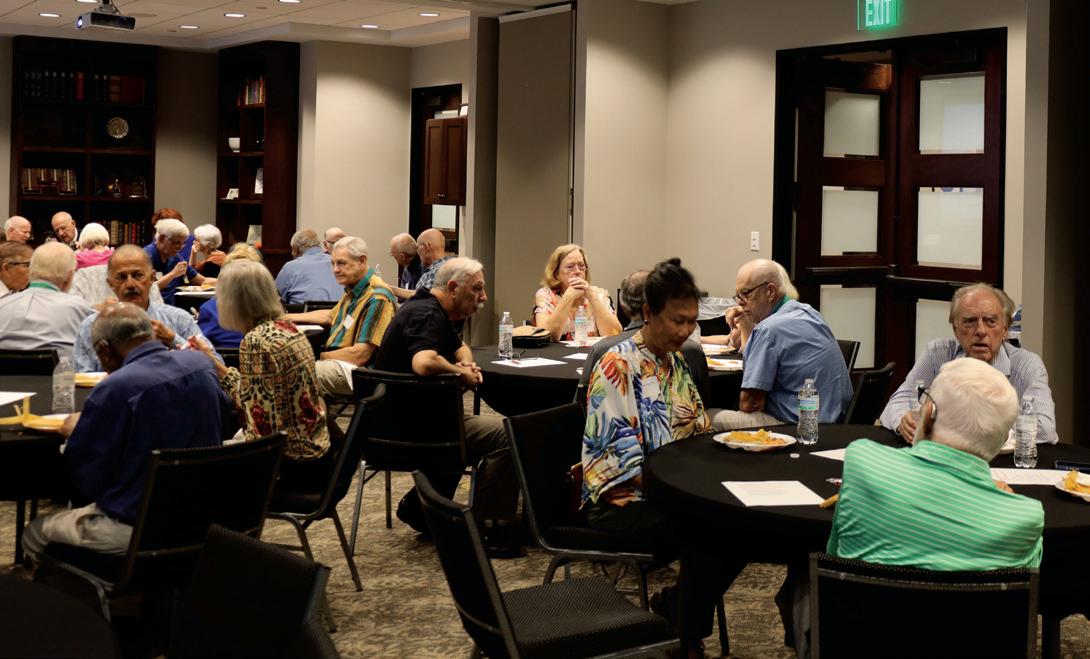


We encourage you to use our friends of medicine businesses whenever you or your practice need supplies or services.

Sol Schwartz & Associates P.C. (HHH Gold Sponsor)
Sol Schwartz & Associates is the premier accounting firm for San Antonio-area medical practices and specializes in helping physicians and their management teams maximize their financial effectiveness.
Christopher Davis, CPA 210-384-8000, ext. 118 CDavis@ssacpa.com www.ssacpa.com
“Dedicated to working with physicians and physician groups.”

Aspect Wealth Management (HHH Gold Sponsor)
We believe wealth is more than money, which is why we improve and simplify the lives of our clients, granting them greater satisfaction, confidence and freedom to achieve more in life.
Michael Clark President
210-268-1520
MClark@aspectwealth.com www.aspectwealth.com
“Your wealth. . .All aspects”

Broadway Bank (HHH Gold Sponsor)
Healthcare banking experts with a private banking team committed to supporting the medical community.
Thomas M. Duran
SVP, Private Banking Team Lead 210-283-6640
TDuran@Broadway.Bank www.broadwaybank.com
“We’re here for good.”

Texas Partners Banks (HHH Gold Sponsor)
Our private banking team specializes in healthcare banking and will work with you to craft and seamlessly integrate financial solutions for you and your practice, including practice loans, lines
of credit and custom local lockbox solutions headquartered in San Antonio. Maria Breen 210-807-5562
Maria.Breen@texaspartners.bank www.texaspartners.bank

Lone Star National Bank (HHH Gold Sponsor)
Established in 1983, Lone Star National Bank has provided banking services to communities in South Texas for the past 41 years. LSNB is an independent and locally owned bank subsidiary of Lone Star National Bancshares-Texas, Inc with consolidated assets of $3 billion (12/31/23) and 36 full-service banking centers throughout Starr, Hidalgo, Cameron and Bexar counties. Aside from personal and business banking, LSNB offers investments, wealth management & trust along with property and casualty insurance, health insurance and supplemental coverage. Ivan Corona Molina Assistant VP 210-479-4713
MolinaI@lonestartnationalbank.com www.lonestarnationalbank.com
“We do what the Little Banks can’t, and the Big Banks won’t!”
Amegy Bank of Texas (HH Silver Sponsor)
We believe that any great relationship starts with five core values: Attention, Accountability, Appreciation, Adaptability and Attainability. We work hard and together with our clients to accomplish great things.
Robert Lindley
SVP | Private Banking Team Lead 210-343-4526
Robert.Lindley@amegybank.com
Denise Smith
Vice President | Private Banking 210-343-4502
Denise.C.Smith@amegybank.com
Scott Gonzales
Assistant Vice President | Private Banking 210-343-4494
Scott.Gonzales@amegybank.com www.amegybank.com
“Community banking partnership”
Synergy Federal Credit Union (HH Silver Sponsor)
Looking for low loan rates for mortgages and vehicles? We've got them for you. We provide a full suite of digital and traditional financial products, designed to help physicians get the banking services they need.
Synergy FCU Member Services 210-750-8333
info@synergyfcu.org www.synergyfcu.org
“Once a member, always a member. Join today!”

Genics Laboratories (HHH Gold Sponsor)
Genics Laboratories offers accurate, comprehensive and reliable results to our partners and patients. Genics Laboratories is committed to continuous research, ensuring our protocols are always at the peak of current technology.
Yulia Leontieva
Managing Partner, Physician Liaison 210-503-0003
Yulia@genicslabs.com
Kevin Setanyan Managing Partner 210-503-0003
Kevin@genicslabs.com
Artyom Vardapetyan Managing Partner 210-503-0003
www.genicslabs.com
“Accurate results in record time.”
Livingston Med Lab (HH Silver Sponsor)
High Complexity Clia/Cola accredited Laboratory providing White Glove Customer Service. We offer a Full Diagnostic Test Menu in the fields of Hematology, Chemistry, Endocrinology, Toxicology, Infectious Disease and Genetics.
Robert Castaneda CEO 210-316-1792
Robert@livingstonmedlab.com www.livingstonmedlab.com/home
“Trusted Innovative, Accurate and STAT Medical Diagnostics”

American Health Imaging (HHH Gold Sponsor)
American Health Imaging (AHI) has 5 state-of-the-art imaging centers in San Antonio, TX with industry- boardcertified subspecialized radiologists delivering precise, reliable results. Easy scheduling and prompt report turnaround times, serving both physicians and their patients. Imaging at AHI is priced up to 60% less than hospitals and in-network with 99% of health plans with competitive rates to save patients money. AHI has an additional 37 best-in-class diagnostic imaging facilities in Alabama, Florida, Georgia, Texas and South Carolina.
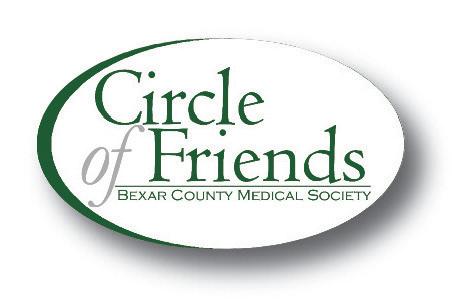
US Radiology Physician Number 210-572-1211
Casey Allen
Regional Sales Director | San Antonio US Radiology Specialists 210-846-0606
Casey.Allen@usradiology.com
Jasmine Mendoza
Jasmine.Mendoza@usradiology.com
Jaime Zamora
Jaime.Zamora@usradiology.com
Sydnie Caradec
Sydnie.Caradec@usradiology.com
Sarah McMindes
Sarah.Mcmindes@usradiology.com
Scott Roberson
Scott.Roberson@usradiology.com
Ryan Denman
Ryan.Denman@usradiology.com www.americanhealthimaging.com (main site)
www.americanhealthimaging.com/ physician-resources/ (Physician Resources to refer to American Health Imaging)

Bexar Credentials Verification, Inc. (HHHH 10K Platinum Sponsor)
Bexar Credentials Verification Inc. provides primary source verification of credentials data that meets The Joint Commission (TJC) and the National Committee for Quality Assurance (NCQA) standards for healthcare entities.
Betty Fernandez Director of Operations 210-582-6355
Betty.Fernandez@bexarcv.com www.bexarcv.com
“Proudly serving the medical community since 1998”

Oakwell Private Wealth Management (HHH Gold Sponsor)
Oakwell Private Wealth Management is an independent financial advisory firm with a proven track record of providing tailored financial planning and wealth management services to those within the medical community.
Brian T. Boswell, CFP® , QKA
Senior Private Wealth Advisor 512-649-8113 Service@oakwellpwm.com www.oakwellpwm.com
“More Than Just Your Advisor, We're Your Wealth Management Partner”
Elizabeth Olney with Edward Jones (HH Silver Sponsor)
We learn your individual needs so we can develop a strategy to help you achieve your financial goals. Join the nearly 7 million investors who know. Contact me to develop an investment strategy that makes sense for you.
Elizabeth Olney Financial Advisor 210-858-5880
Elizabeth.Olney@edwardjones.com www.edwardjones.com/elizabeth-olney "Making Sense of Investing"

Aspect Wealth Management (HHH Gold Sponsor)
We believe wealth is more than money, which is why we improve and simplify the lives of our clients, granting them greater satisfaction, confidence and freedom to achieve more in life.
Michael Clark President 210-268-1520
MClark@aspectwealth.com www.aspectwealth.com
“Your wealth. . .All aspects”

Hancock Whitney (HHH Gold Sponsor)
Since the late 1800s, Hancock Whitney has embodied core values of Honor & Integrity, Strength & Stability, Commitment to Service, Teamwork and Personal Responsibility. Hancock Whitney offices and financial centers in Mississippi, Alabama, Florida, Louisiana and Texas offer comprehensive financial products and services, including traditional and online banking; commercial, treasury management, and small business banking; private banking; trust; healthcare banking; and mortgage services. www.hancockwhitney.com
John Riquelme
San Antonio Market President 210-273-0989
John.Riquelme@hancockwhitney.com
Larry Anthis Corporate Banking, Relationship Manager 210-507-9646
Larry.Anthis@hancockwhitney.com
Serina Perez
San Antonio Business Banking 210-507-9636
Serina.Perez@hancockwhitney.com
Erik Carrington
Texas Regional Wealth Management Manager 713-543-4517
Erik.Carrington@hancockwhitney.com

UT Health San Antonio
MD Anderson Cancer Center (HHH Gold Sponsor)
UT Health provides our region with the most comprehensive care through expert, compassionate providers treating patients in more than 140 medical specialties at locations throughout San Antonio and the Hill Country.
UT Health San Antonio Physicians
Regina Delgado Business Development Manager 210-450-3713
DelgadoR4@uthscsa.edu
UT Health San Antonio
MD Anderson Mays Cancer Center
Laura Kouba
Business Development Manager 210-265-7662
NorrisKouba@uthscsa.edu https://uthscsa.edu/ Appointments: 210-450-1000
UT Health San Antonio 7979 Wurzbach Road San Antonio, TX 78229
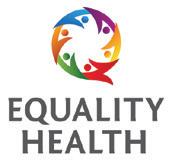
Equality Health (HHH Gold Sponsor)
Equality Health deploys a wholeperson care model that helps independent practices adopt and deliver value-based care for diverse communities. Our model offers technology, care coordination and hands-on support to optimize practice performance for Medicaid patients in Texas.
Cristian Leos
Network Development Manager 210-608-4205
CLeos@equalityhealth.com www.equalityhealth.com
“Reimagining the New Frontier of Value-Based Care.”
DialOPS
(H Bronze Sponsor)
We were founded to meet a need: helping business owners succeed by giving them simple, quality, affordable U.S.-based contact solutions. In only a few years, our focus on nurturing client relations and building trust not only helped our customers grow their businesses,
but helped us stake our claim in the highly competitive TAS industry as one of the most well-regarded and referred. Our 50 years of collective experience are the driving force behind our clients’ satisfaction.
Rachel Caero Managing Partner 844-554-3473
Rachel@dialops.net
(HH Silver Sponsor)
Insperity’s HR solutions offer premium service and technology to facilitate growth by streamlining processes related to payroll, benefits, talent management and HR compliance. We provide the tools to help you lighten your administrative load, maximize productivity and manage risks – so you can focus on growth.
Fran Yacovone
Business Performance Advisor 210-558-2507
Fran.Yacovone@insperity.com
Dayton Parker Business Performance Advisor 210-558-2517
Dayton.Parker@insperity.com www.insperity.com
“Insperity’s mission is to help businesses succeed so communities prosper”

TMA Insurance Trust
(HHHH 10K Platinum Sponsor)
TMA Insurance Trust is a full-service insurance agency offering a full line of products – some with exclusive member discounts and staffed by professional advisors with years of experience. Call today for a complimentary insurance review. It will be our privilege to serve you.
Wendell England Director of Member Benefits 512-370-1746
Wendell.England@tmait.org 800-880-8181 www.tmait.org
“We offer BCMS members a free insurance portfolio review.”

Texas Medical Liability Trust (HHHH 10K Platinum Sponsor) With more than 20,000 healthcare professionals in its care, Texas Medical Liability Trust (TMLT) provides malpractice insurance and related products to physicians. Our purpose is to make a positive impact on the quality of healthcare for patients by educating, protecting and defending physicians.
Patty Spann
Director of Sales and Business Development 512-425-5932
Patty-Spann@tmlt.org www.tmlt.org
“Recommended partner of the Bexar County Medical Society”

The Bank of San Antonio Insurance Group, Inc. (HHH Gold Sponsor)
We specialize in insurance and banking products for physician groups and individual physicians. Our local insurance professionals are some of the few agents in the state who specialize in medical malpractice and all lines of insurance for the medical community.
Katy Brooks, CIC 210-807-5593
Katy.Brooks@bosainsurance.com www.thebankofsa.com
“Serving the medical community.”
MedPro Group
(HH Silver Sponsor)
Rated A++ by A.M. Best, MedPro Group has been offering customized insurance, claims and risk solutions to the healthcare community since 1899. Visit MedPro to learn more.
Kirsten Baze, RPLU, ARM
AVP Market Manager, SW Division 512-658-0262
Fax: 844-293-6355
Kirsten.Baze@medpro.com www.medpro.com

LASO Health Telemedicine and Rx App (HHH Silver Sponsor)
LASO Health is the industry’s only solution that makes healthcare services accessible, cost-transparent and convenient. Its mission is to reinvent “healthcare” in the United States by empowering every individual and employer, insured or uninsured to have easy, timely, predictable, cost-effective care. LASO combines an intuitive, mobile superapp with a marketplace of virtual and in-person health services to give customers a one-touch, onestop-shop, comprehensive health solution.
Ruby Garza, MBA 210-212-2622
RGarza@texaskidneycare.com www.lasohealth.com

Parvis Medical Suites (HHHH 10K Platinum Sponsor)
Parvus Medical Suites offers a new way to start your own private clinical practice, either full-time or part-time, at a much lower cost than a traditional clinic. We take care of providing well-qualified employees, so that you can focus solely on delivering high-quality patient care. Our turn-key practice spaces in San Antonio and New Braunfels are available for short- and long-term lease options, and come complete with all amenities. Micropractice medicine is revolutionizing independent clinical care.
John Rodriguez, MD Chief Medical Officer 210-632-3411
DrJohn@parvussuites.com www.parvussuites.com
Henry Schein Medical (HH Silver Sponsor)
From alcohol pads and bandages to EKGs and ultrasounds, we are the largest worldwide distributor of medical supplies, equipment, vaccines and pharmaceuticals serving office-based practitioners in 20 countries. Recognized as one of the world’s most ethical companies by Ethisphere.
Tom Rosol Field Sales Consultant
210-413-8079
Tom.Rosol@henryschein.com www.henryschein.com
“BCMS members receive GPO discounts of 15 to 50 percent.”
Eleos Virtual Healthcare Solutions (HH Silver Sponsor)
Empowering physicians for a Balanced Future. Our virtual health associates alleviate administrative burdens in the evolving healthcare landscape, combatting burnout. Join us in transforming healthcare delivery, prioritizing your wellbeing and patient care.
Darby Rodriguez Regional Client Executive 281-753-3565
D.Rodriguez@eleosvhs.com www.equalityhealth.com
“Reimagining the New Frontier of Value-Based Care”
Healthcare Leaders of San Antonio (HH Silver Sponsor)
We are dedicated to nurturing business connections and professional relationships, exchanging knowledge to enhance leadership, and creating career opportunities for healthcare and other industry leaders in a supportive community.
David Neathery President 210-797-8412
HealthcareLeadersSA@gmail.com
Gary Meyn, LFACHE Vice President 210-912-0120
GMeyn@vestedbb.com
https://healthcareleaderssa.com/ “Come, Learn, Connect!”
The Health Cell (HH Silver Sponsor)
“Our Focus is People” Our mission is to support the people who propel the healthcare and bioscience industry in San Antonio. Industry, academia, military, nonprofit, R&D, healthcare delivery, professional services and more!
Kevin Barber President 210-308-7907 (Direct) KBarber@bdo.com
Valerie Rogler Program Coordinator 210-904-5404
Valerie@thehealthcell.org www.thehealthcell.org
“Where San Antonio’s Healthcare Leaders Meet”
San Antonio Medical Group Management Association (SAMGMA) (HH Silver Sponsor)
SAMGMA is a professional nonprofit association with a mission to provide educational programs and networking opportunities to medical practice managers and support charitable fundraising.
Jeannine Ruffner President info4@samgma.org www.samgma.org

Oakwell Private Wealth Management (HHH Gold Sponsor)
Oakwell Private Wealth Management is an independent financial advisory firm with a proven track record of providing tailored financial planning and wealth management services to those within the medical community.
Brian T. Boswell, CFP® QKA Senior Private Wealth Advisor 512-649-8113 Service@oakwellpwm.com www.oakwellpwm.com
“More Than Just Your Advisor, We’re Your Wealth Management Partner”
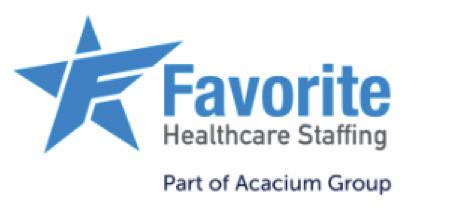
Favorite Healthcare Staffing (HHHH 10K Platinum Sponsor)
Serving the Texas healthcare community since 1981, Favorite Healthcare Staffing is proud to be the exclusive provider of staffing services for the BCMS. In addition to traditional staffing solutions, Favorite offers a comprehensive range of staffing services to help members improve cost control, increase efficiency and protect their revenue cycle.
San Antonio Office 210-301-4362
www.favoritestaffing.com
“Favorite Healthcare Staffing offers preferred pricing for BCMS members.”

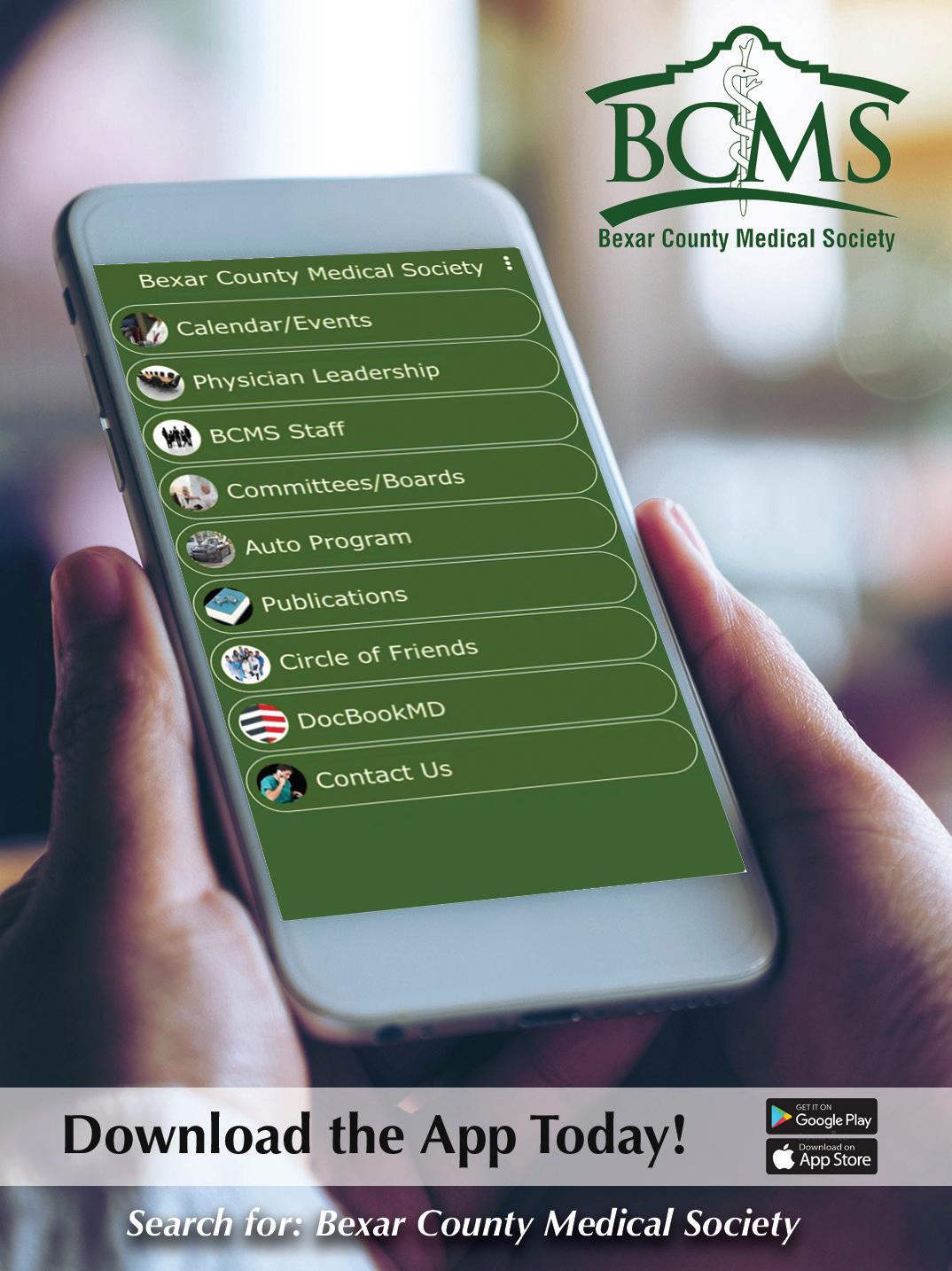

By Stephen Schutz, MD

The Mercedes E-Class was updated just last year, and it continues to be a great choice for upscale customers looking for an understated luxury sedan that’s safe and provides a very good driving experience in all circumstances.
For many years, I would describe the E-Class as “the” go-to car for successful professionals just entering their peak earning years — think 42-year-old radiologist who just made partner.
While that was true about 10-20 years ago, I don’t think it’s the case anymore as that demographic has almost completely turned their back on sedans and moved to SUVs and crossovers. Don’t believe me? When’s the last time you saw a radiologist who just made partner buy a sedan? It’s been a long time for me, and probably for you, too. These days I’d put my money on a Porsche, BMW or Rivian SUV rather than a BMW 5-series or Mercedes E-class.
It’s a shame, really. Mid-size luxury sedans like the Mercedes E-class are still excellent vehicles after all, as I rediscovered during my time with the latest E450.
There are two E-Class sedans available for 2025, the entry level E350, which starts at around $63,000, and the more lux E450, which maxes out at just under $75,000.

Under the E350’s hood is a turbocharged 2.0-liter four-cylinder engine that pairs with a 23-hp electric motor for a combined 255HP. The E450 model gets a similar hybrid setup for its turbocharged 3.0liter inline-six, which brings the total to 375HP. Car and Driver says that the hybrid systems reduce turbo lag and smooth the operation of the auto start/stop system, and I’d say that’s right.
Fuel economy is 24 MPG City and 33 MPG Highway for the E350 and 22/31 for the E450.
An adjustable air suspension is optional and replaces the steelspring arrangement that comes standard, but both setups provide impeccable ride quality and good handling. I’d skip the more complicated air system and its added complexity, honestly.
Rear-wheel steering (RWS) is also available, and it noticeably improves maneuverability in tight spaces. I had to drive my test car through a tight parking garage and found RWS to be very helpful.
The E450 is an excellent daily driver, which has always been the case for E-Class cars and is an important reason that they’ve historically been so popular. Running errands in town, ferrying friends to a restaurant for dinner, and zipping along the highway are no sweat for this car. Driving an E-Class will always be better than wrestling with a


similarly priced SUV. Plus, parking is significantly easier in a mid-size sedan than in an SUV or pickup truck.
The only downside of the E450 driving experience in my opinion is that it’s a 1990s car in a 2020s world, which means that you’ll usually be surrounded by SUVs and trucks, and that can be claustrophobic.
Despite its relatively diminutive size, the E450 sedan retains all of the safety bonafides for which Mercedes is famous. Obviously, I didn’t have the “opportunity” to try out any of Mercedes’ myriad safety features during my time in the E450, but I appreciate that automatic braking, latest-tech airbags, a time-tested safety cage and much more are all present in every Mercedes E-Class sedan.
So is plenty of luxury, particularly inside the cabin. China is Mercedes’ biggest market these days so their preferences matter more than ours, which is why there’s plenty of bling throughout the E450’s interior. Ditto for prominent mood lighting (in a variety of colors that you can configure yourself) and tech galore.
I wish there were more buttons and less touchscreens in cars these days but, sigh, Chinese (and younger American) luxury car buyers have spoken, and driving a modern car is becoming more and more like interacting with your phone.

Before we wrap this up, we should touch on the new E-Class’s exterior design. Bling in the form of prominent badging and extroverted front and rear light housings are present (for the reason noted above), but so is, interestingly, an attempt to tie Mercedes’ most mainstream sedan visually to its controversial all-electric EQ sedans. The E-Class now looks rounder than it did before, and its grille is smaller and less expressive. Presumably some of that is to optimize aerodynamics, but I think part of it is the stylists at Mercedes trying to say, “Hey, how ugly can the EQ models be if they look a little like the new E-Class?”
The new 2025 E-Class sedans bring all the luxury, driving goodness and safety you expect from Mercedes and add lots of tech and efficiency. It’s a shame most buyers at this price point will choose more boring SUVs or crossovers instead of one of these excellent sedans.

Stephen Schutz, MD, is a board-certified gastroenterologist who lived in San Antonio in the 1990s when he was stationed here in the U.S. Air Force. He has been writing auto reviews for San Antonio Medicine magazine since 1995.



11911 IH 10 West San Antonio, TX 78230
Coby Allen 210-696-2232
Northside Honda
9100 San Pedro Ave. San Antonio, TX 78216
Jaime Anteola 210-744-6198
Kahlig Auto Group
Audi Dominion 21105 West IH 10 San Antonio, TX 78257
Anthony Garcia 210-681-3399
14610 IH 10 West San Antonio, TX 78249
Tim Rivers 832-428-9507
Northside Chevrolet 9400 San Pedro Ave. San Antonio, TX 78216
Domingo Saenz 210-341-3311
Land Rover San Antonio 13660 IH 10 West San Antonio, TX
Cameron Tang 210-561-4900
North Park Lincoln 9207 San Pedro San Antonio, TX
Sandy Small 210-341-8841
North Park Subaru at Dominion 21415 IH 10 West San Antonio, TX 78257
Phil Larson
877-356-0476
Mercedes Benz of Boerne 31445 IH 10 West Boerne, TX
James Godkin 830-981-6000
Mercedes Benz of San Antonio 9600 San Pedro San Antonio, TX
Chris Martinez 210-366-9600
Auto Group
Bluebonnet Chrysler
Dodge Ram 547 S. Seguin Ave. New Braunfels, TX 78130
Matthew C. Fraser 830-606-3463
Northside Ford 12300 San Pedro San Antonio, TX
Marty Martinez 210-477-3472
North Park Lexus 611 Lockhill Selma San Antonio, TX
Jose Contreras 320-308-8900
North Park Lexus at Dominion 25131 IH 10 W Dominion San Antonio, TX
James Cole 210-816-6000
9455 IH 10 West San Antonio, TX 78230
Jordan Trevino 210-764-6945
North Park Subaru 9807 San Pedro San Antonio, TX 78216
Raymond Rangel 210-308-0200
Cavender Toyota 5730 NW Loop 410 San Antonio, TX
Spencer Herrera 210-581-0474
North Park Toyota 10703 Southwest Loop 410 San Antonio, TX 78211
Justin Boone 210-635-5000

